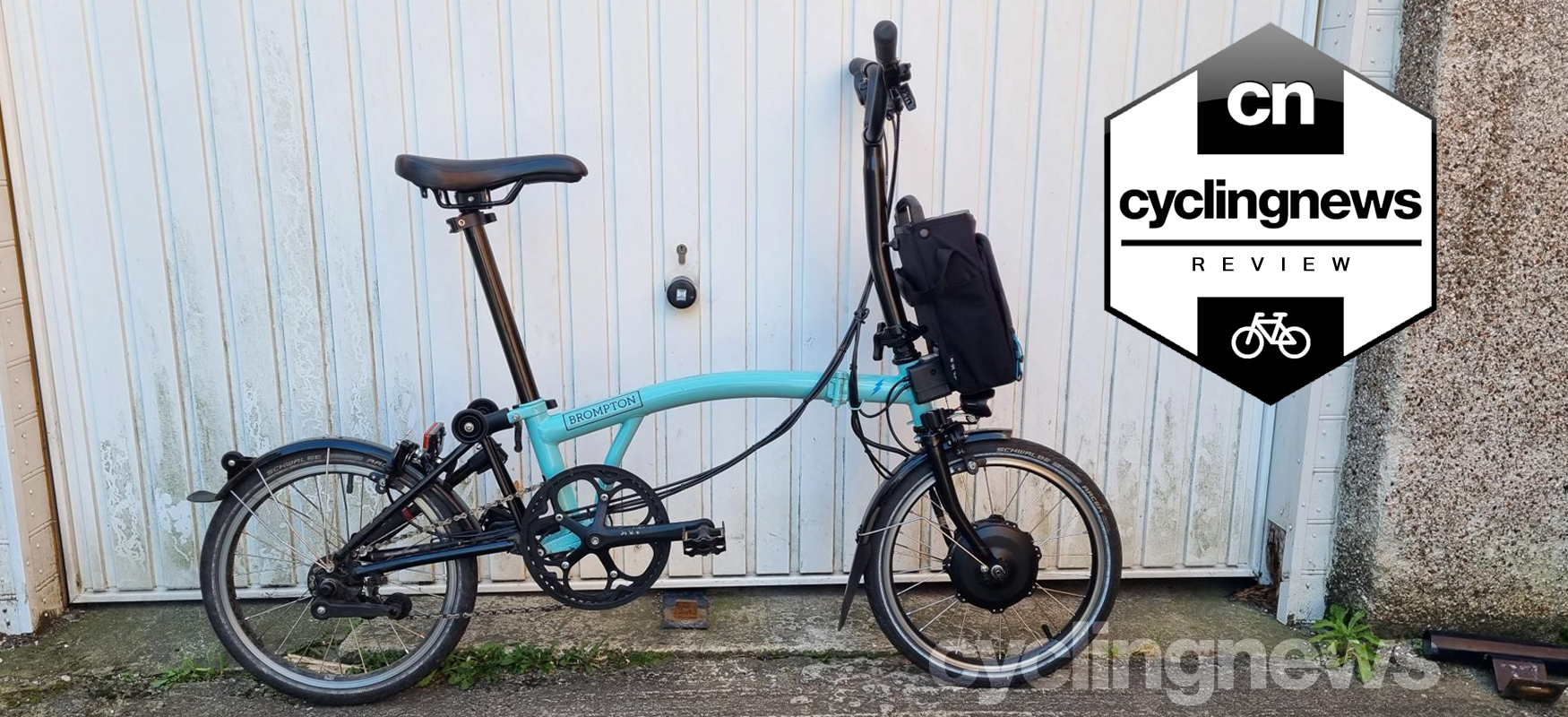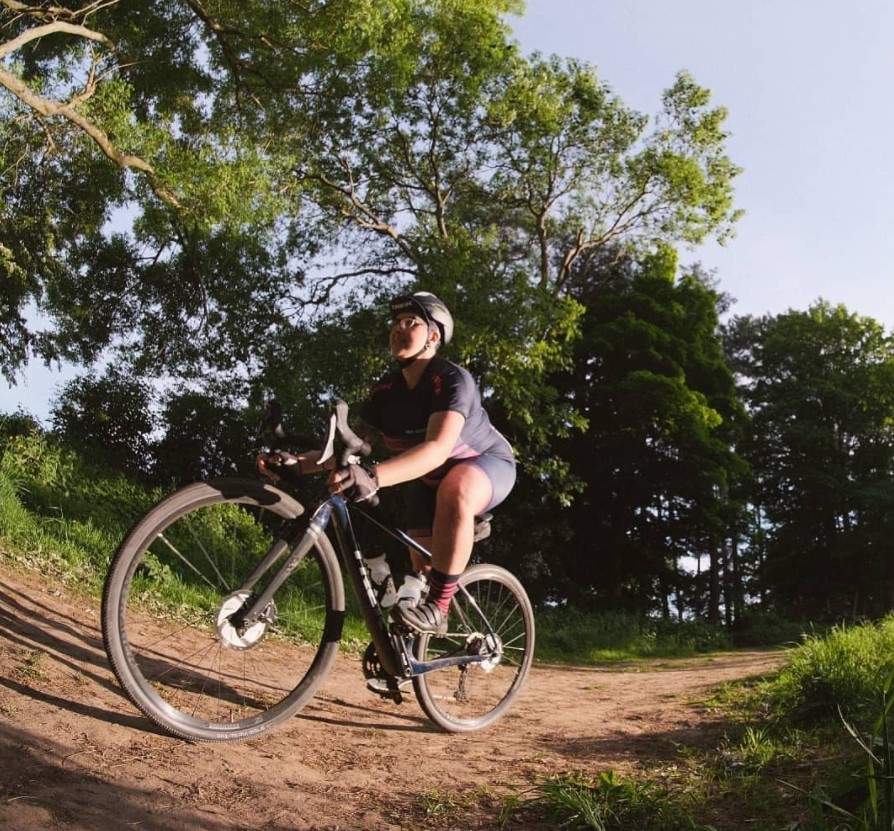Cyclingnews Verdict
Convenient and stylish, but sluggish and twitchy, and sometimes more hassle than it’s worth.
Pros
- +
Easily stored when folded
- +
Very quick to unfold and fold again
- +
Excellent luggage options
Cons
- -
Extremely heavy and difficult to carry
- -
Awkward to roll along when folded
- -
Brake lever placement is uncomfortable for smaller hands
- -
Twitchy start up
- -
Sluggish up hills
- -
Braking doesn't cut the motor
- -
Mode controls can be awkward to access on the move
You can trust Cyclingnews
The humble Brompton has an iconic shape and folding mechanism that makes it recognisable just about anywhere. It’s now been five years since the British brand introduced a battery-powered model to its range, now named the Electric C-Line, and we’ve spent the past six months using the Electric C-Line Urban for everything from small grocery trips to commuting 10 miles each way from Bristol to Bath, and traversing many of the hills the south-west cities are famed for. How does it perform amongst the best folding electric bikes on the market, and is it worthy of our list of the best electric commuter bikes? Read on to find out more.
Design and aesthetics
Unless you’re a real Brompton hater, it’s undeniable that the Electric C-Line is easy on the eyes. The lovely turquoise colour has received a lot of compliments throughout the testing period (two other colours are available), and because the battery slots onto the front where there’s often a bag, it’s mostly indistinguishable from a regular analogue Brompton.
For those unfamiliar with the iconic three-part folding design, the bike features a tab you press to release the hinge for the back end and tuck the rear wheel underneath. Undoing another hinge enables the front end to pivot to the back and side, placing the wheels next to each other, while a hook on the non-drive side fork leg slots over the drive side seatstay to hold it in place. Then it’s simply a matter of loosening a hinge clamp around the base of the stem, which sends the handlebars swinging diagonally down and fixing into place via a ball joint (the handlebar catch and handlebar catch nipple) that connects the stem to the other fork leg, and the dropping of the seatpost locks everything into place. Finally, the left-hand pedal folds away, to make the unit easier to carry with the right hand. Unfolding is much the same in reverse.
The Electric C-Line Urban comes with a choice of two handlebar types: Brompton’s M and H (Mid and High, respectively). The H has a sharper rise and puts the rider into more of an upright position, while the M, which came on our sample bike, is slightly shallower.
Some other details to note, before moving onto the spec: when the bike is in its folded position, it’s designed to be rolled along, thanks to the inclusion of three small wheels. One pair is located at the rear hinge, so that once you tuck the wheel away, the back end rests on those wheels. The third wheel is attached to the rear mudguard.
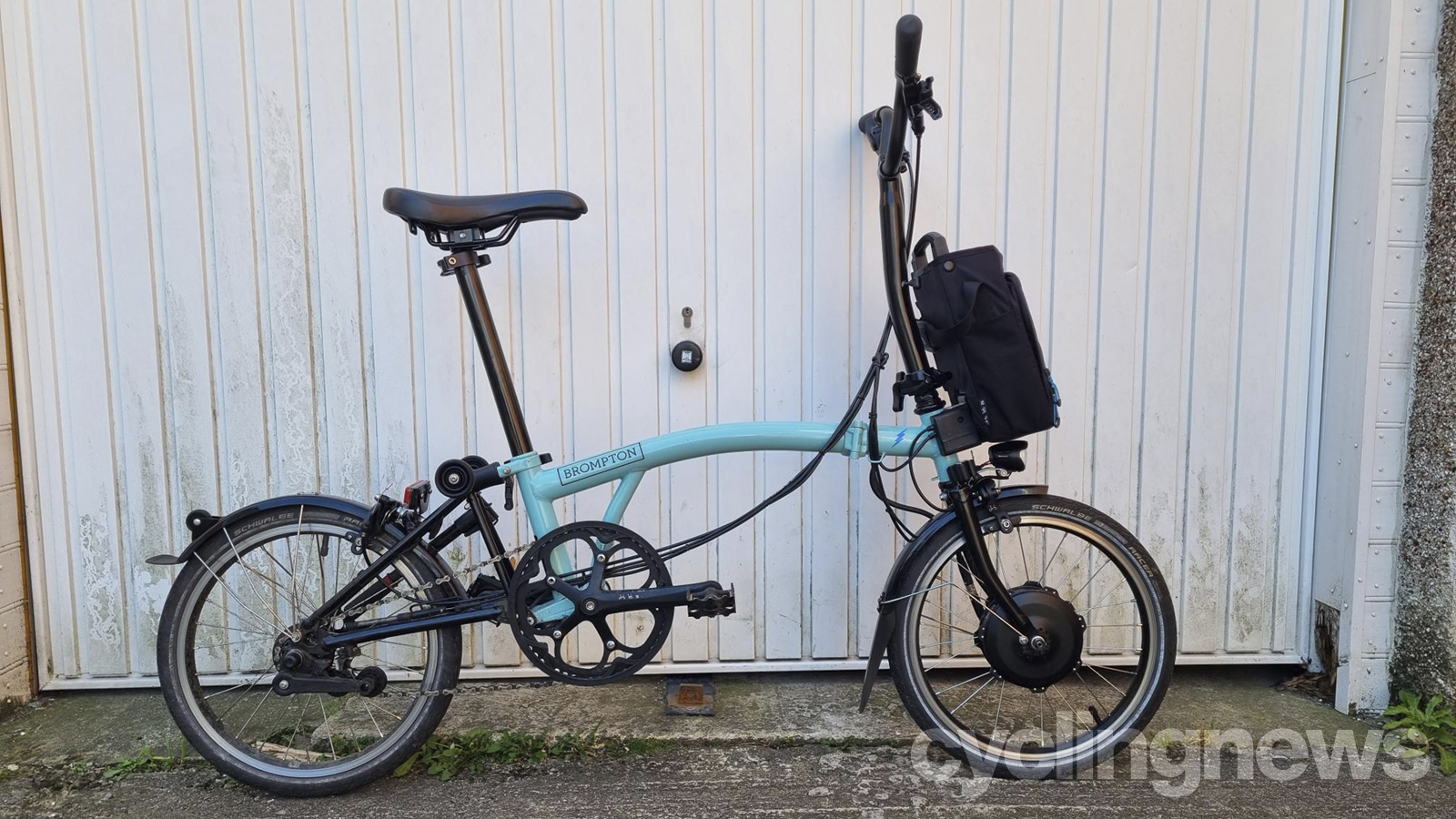
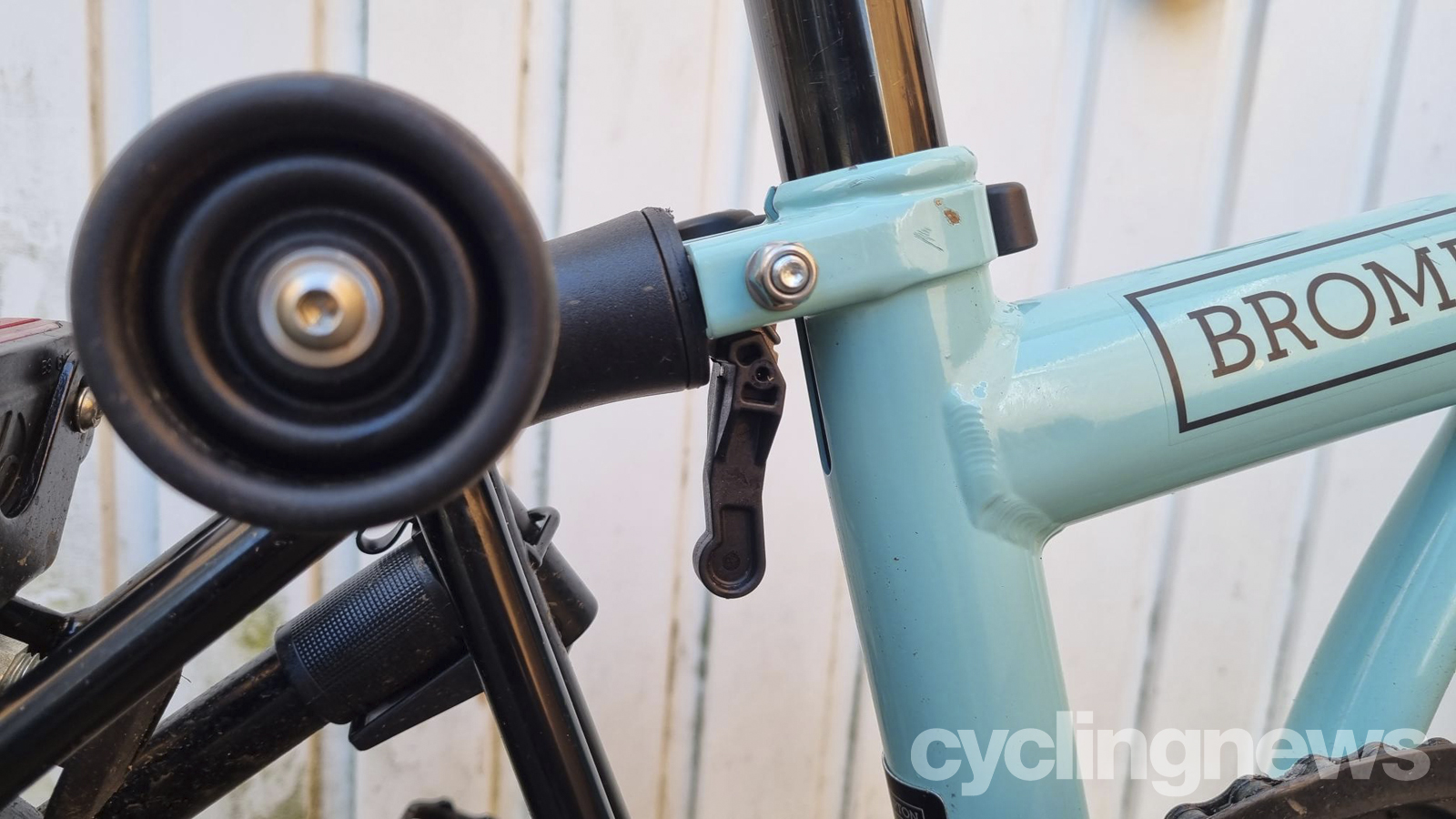
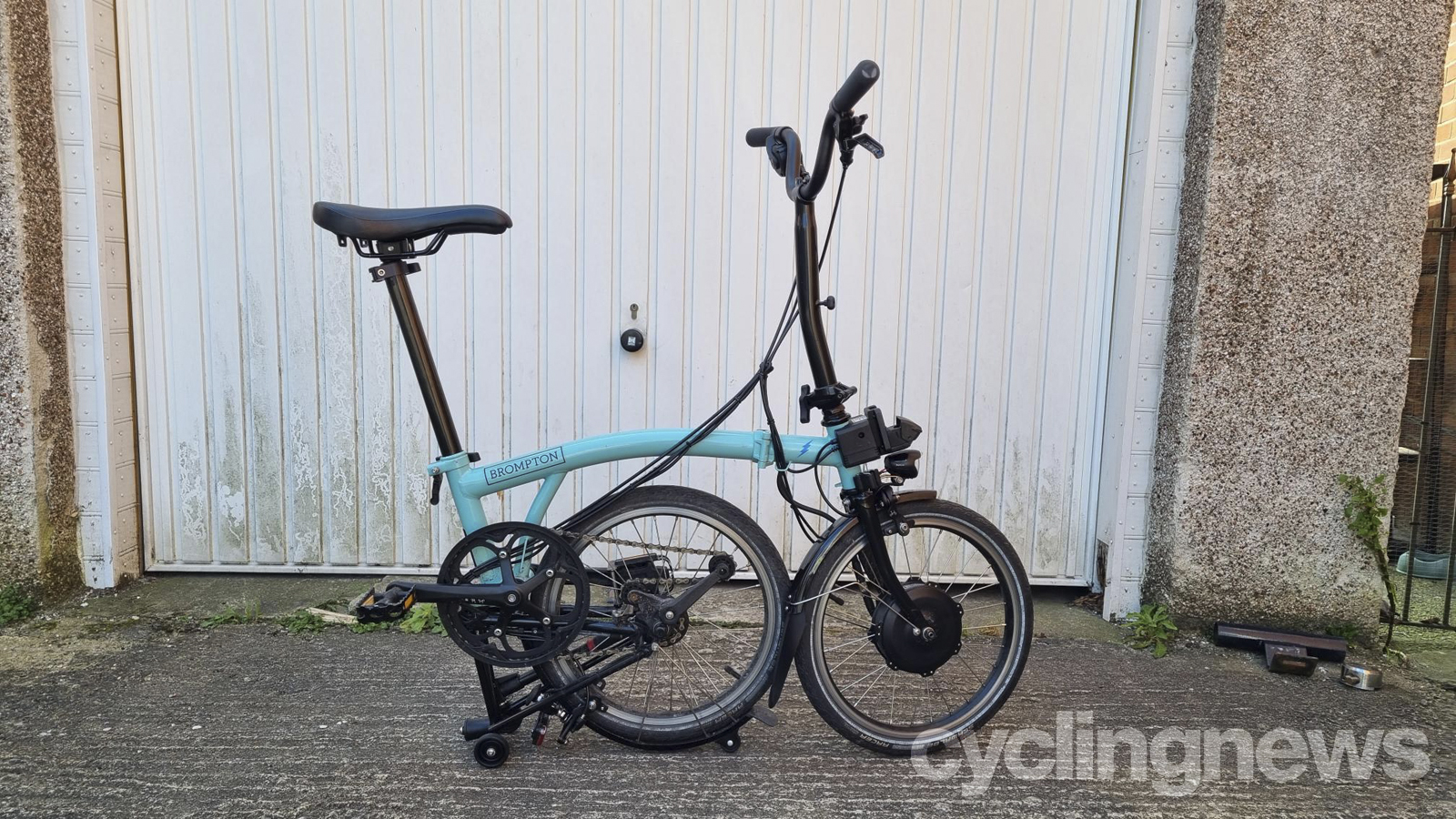
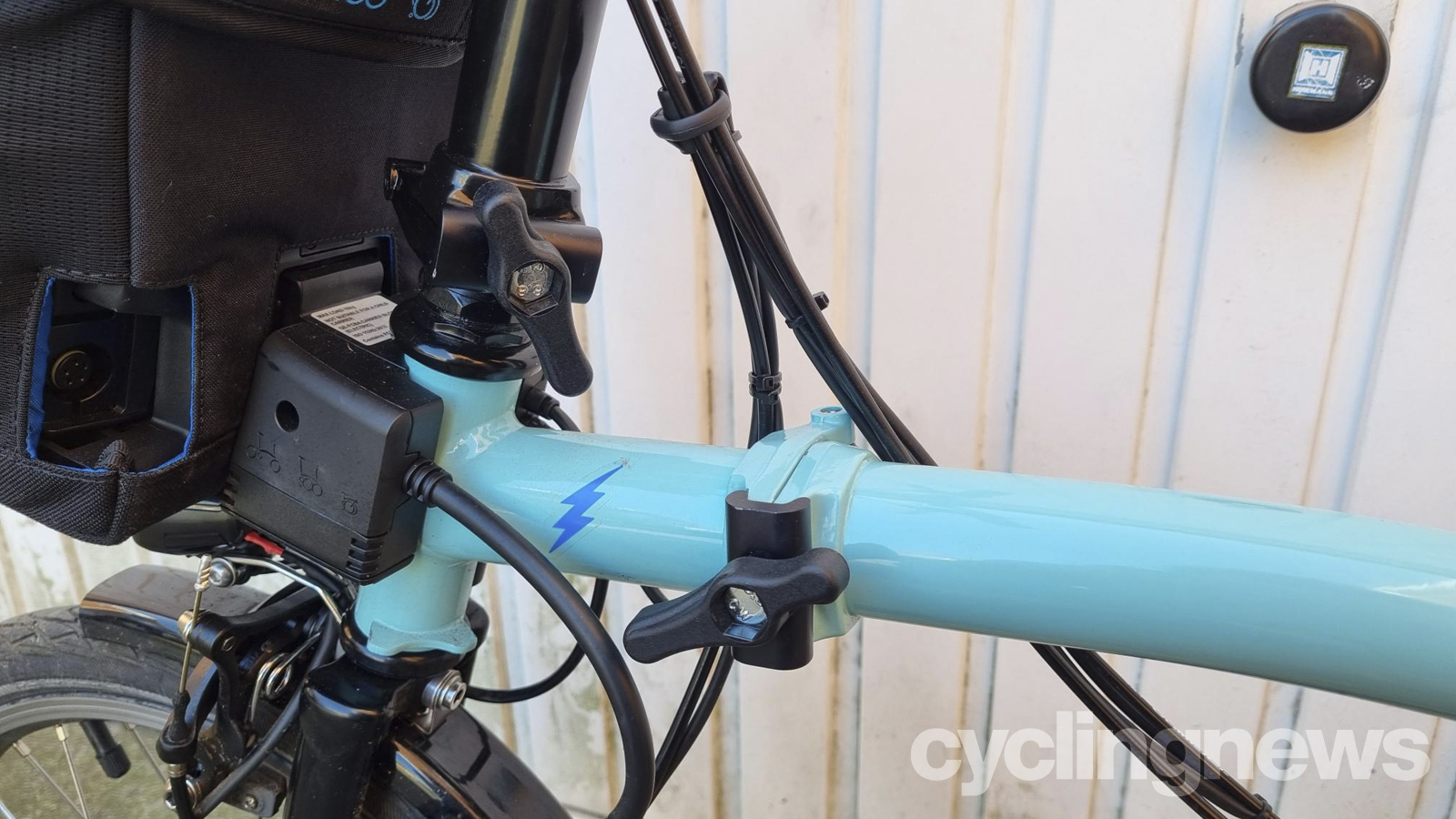
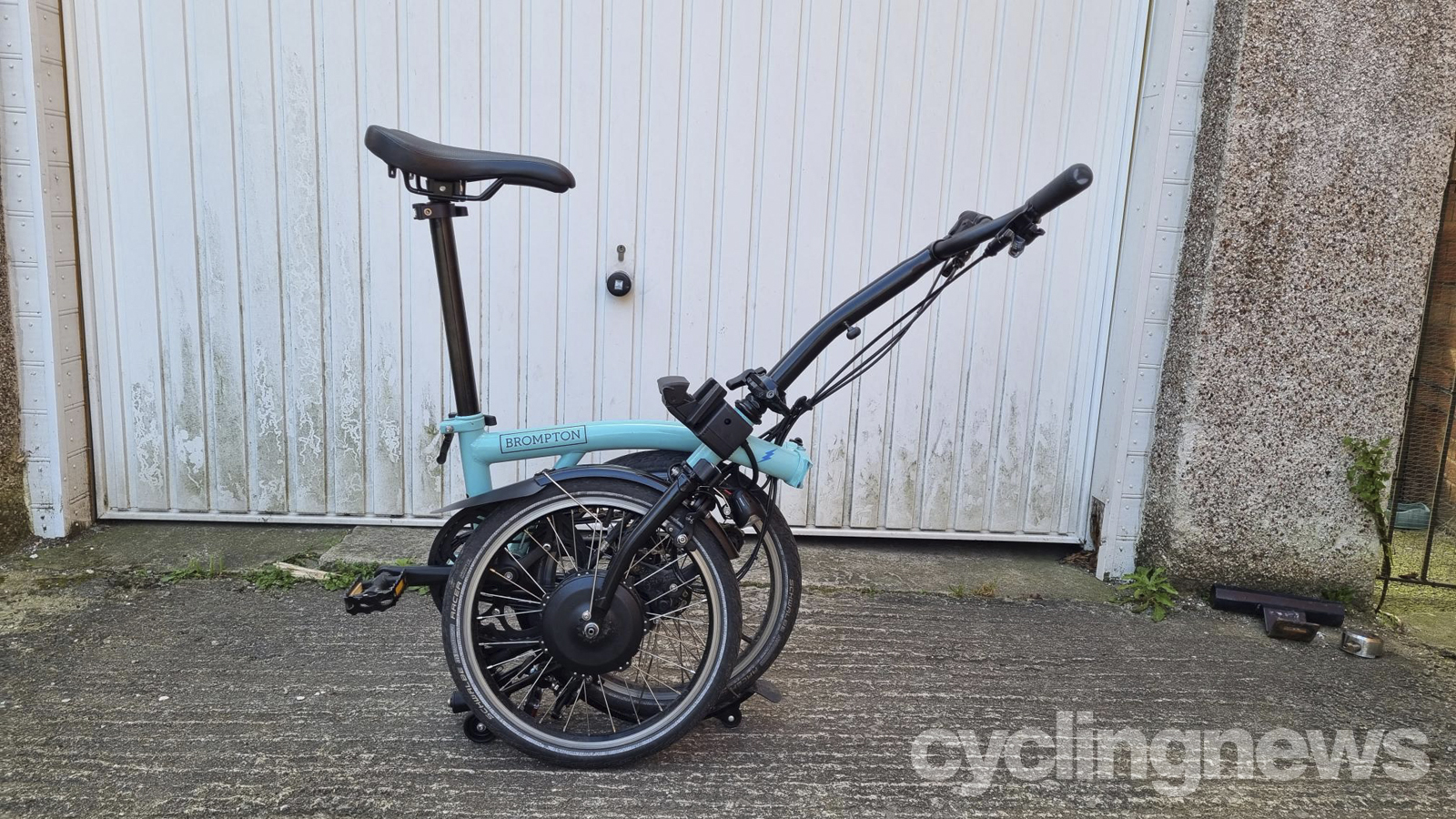
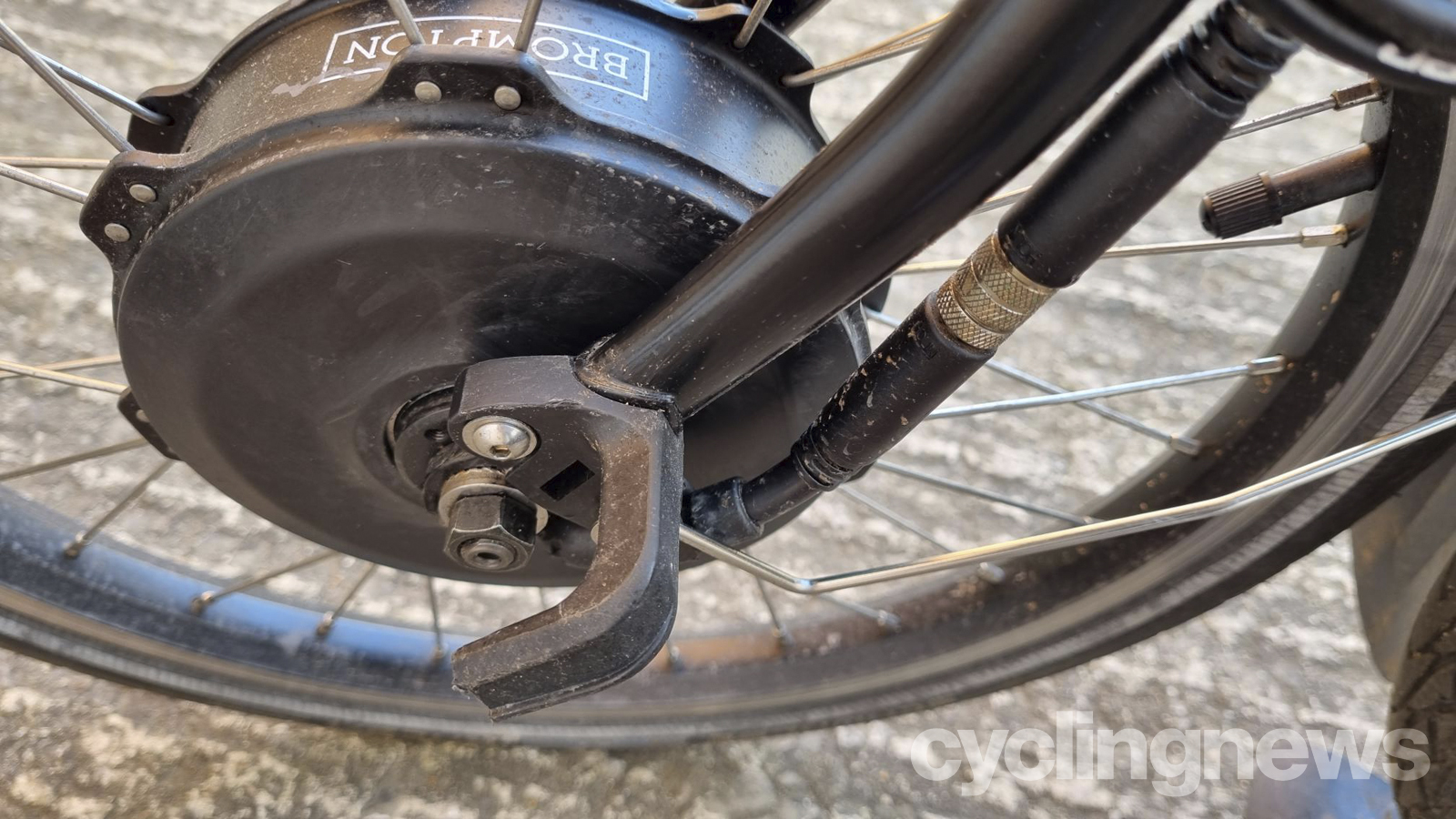
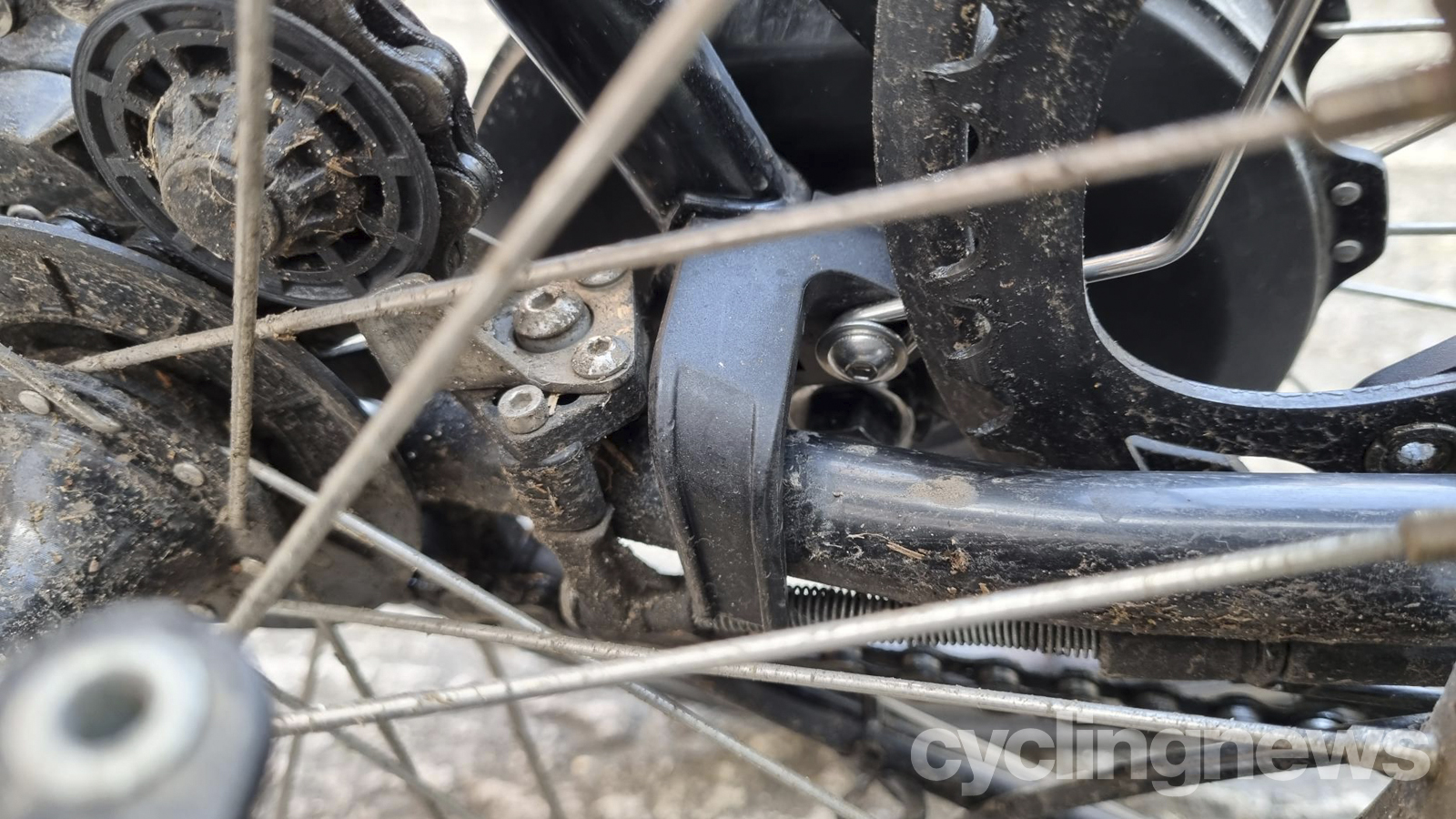
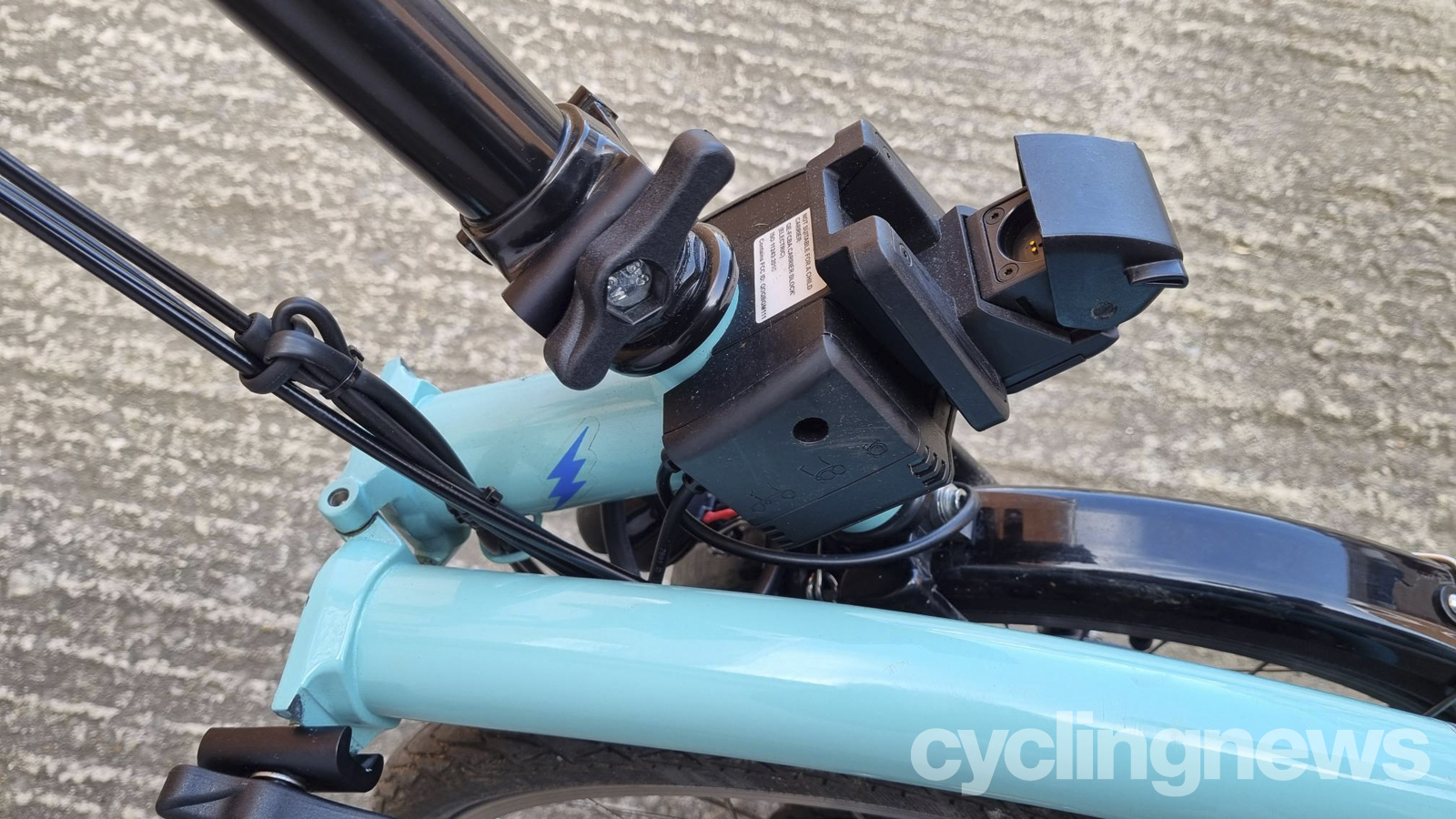
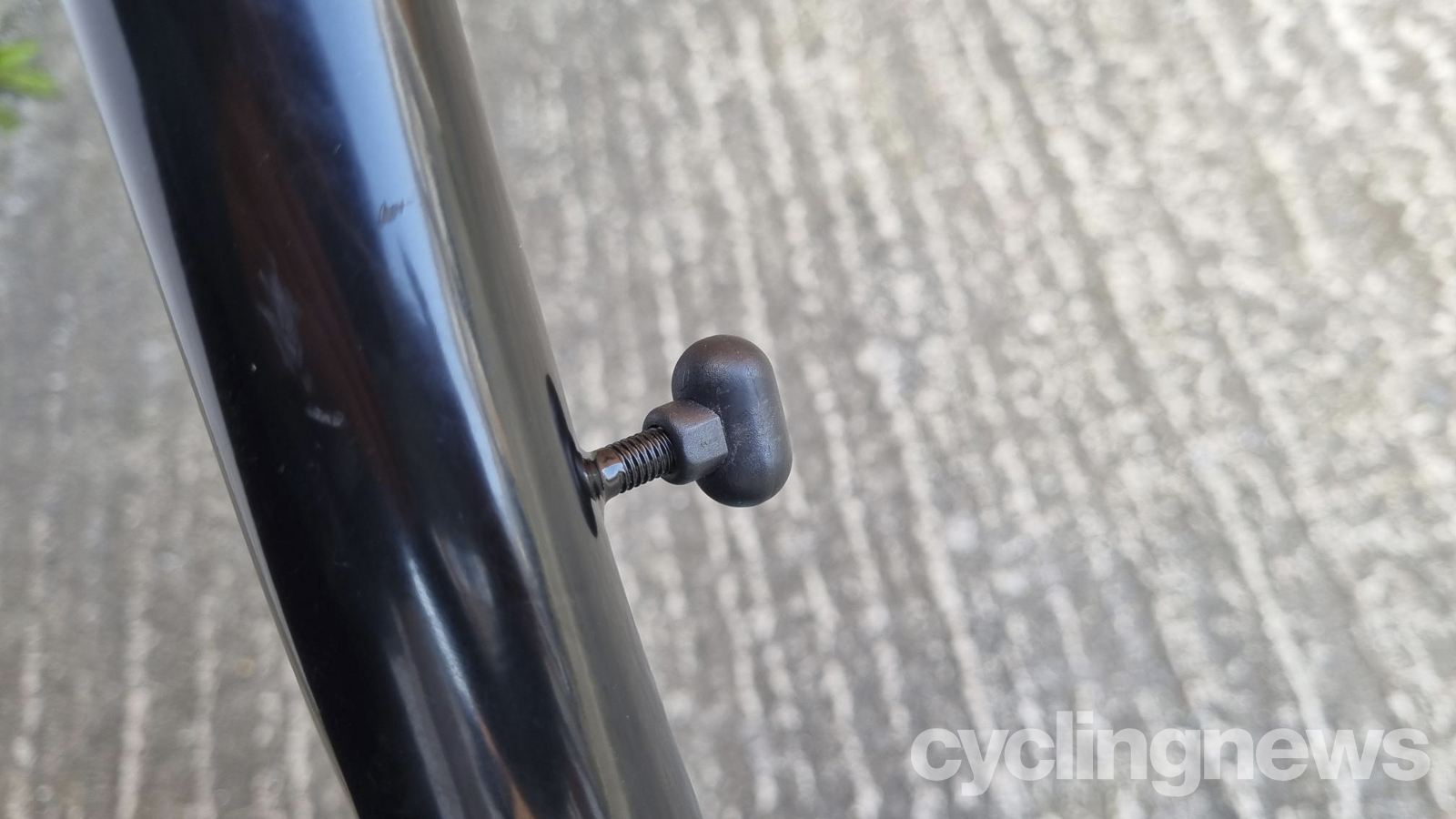
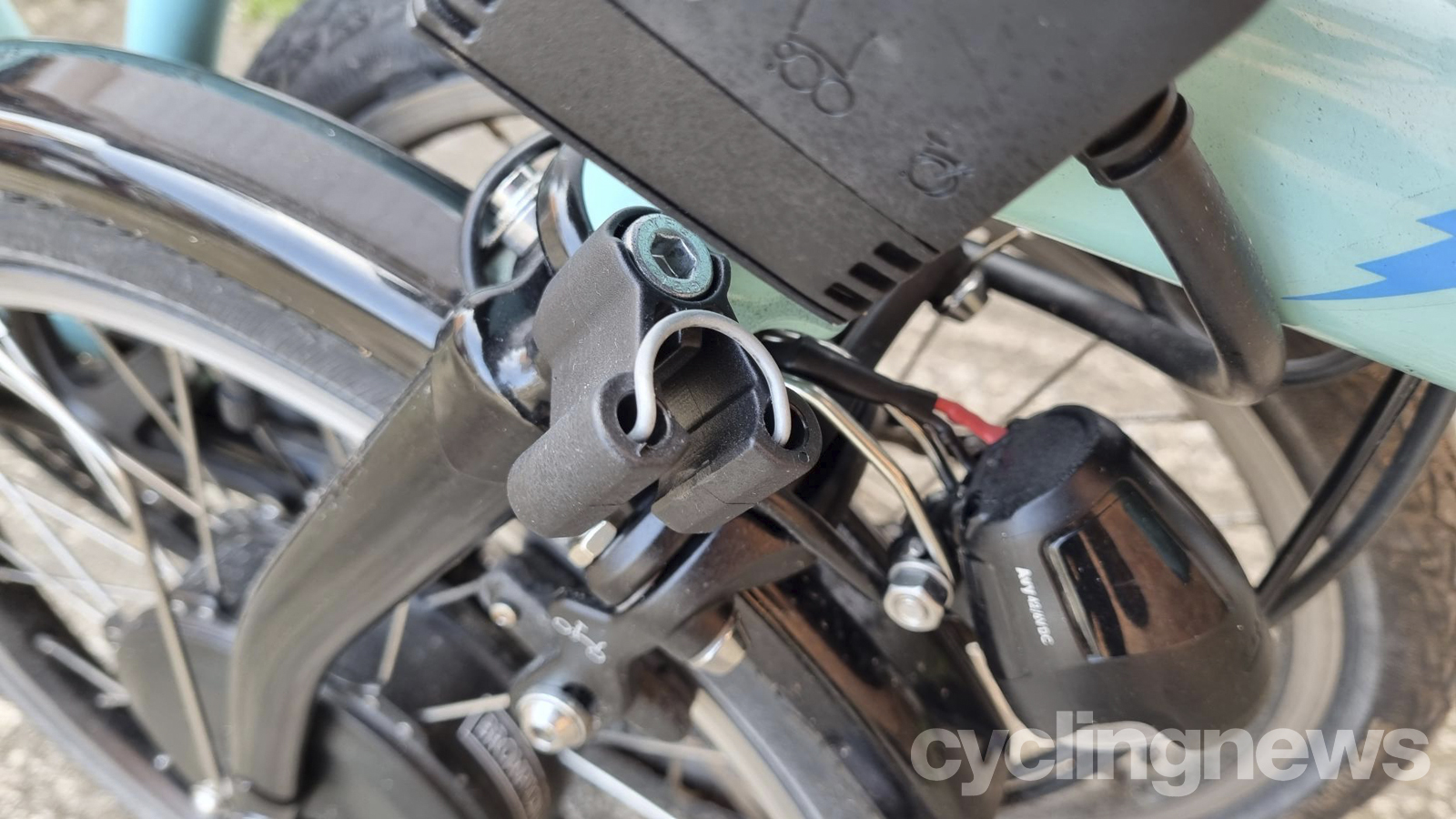
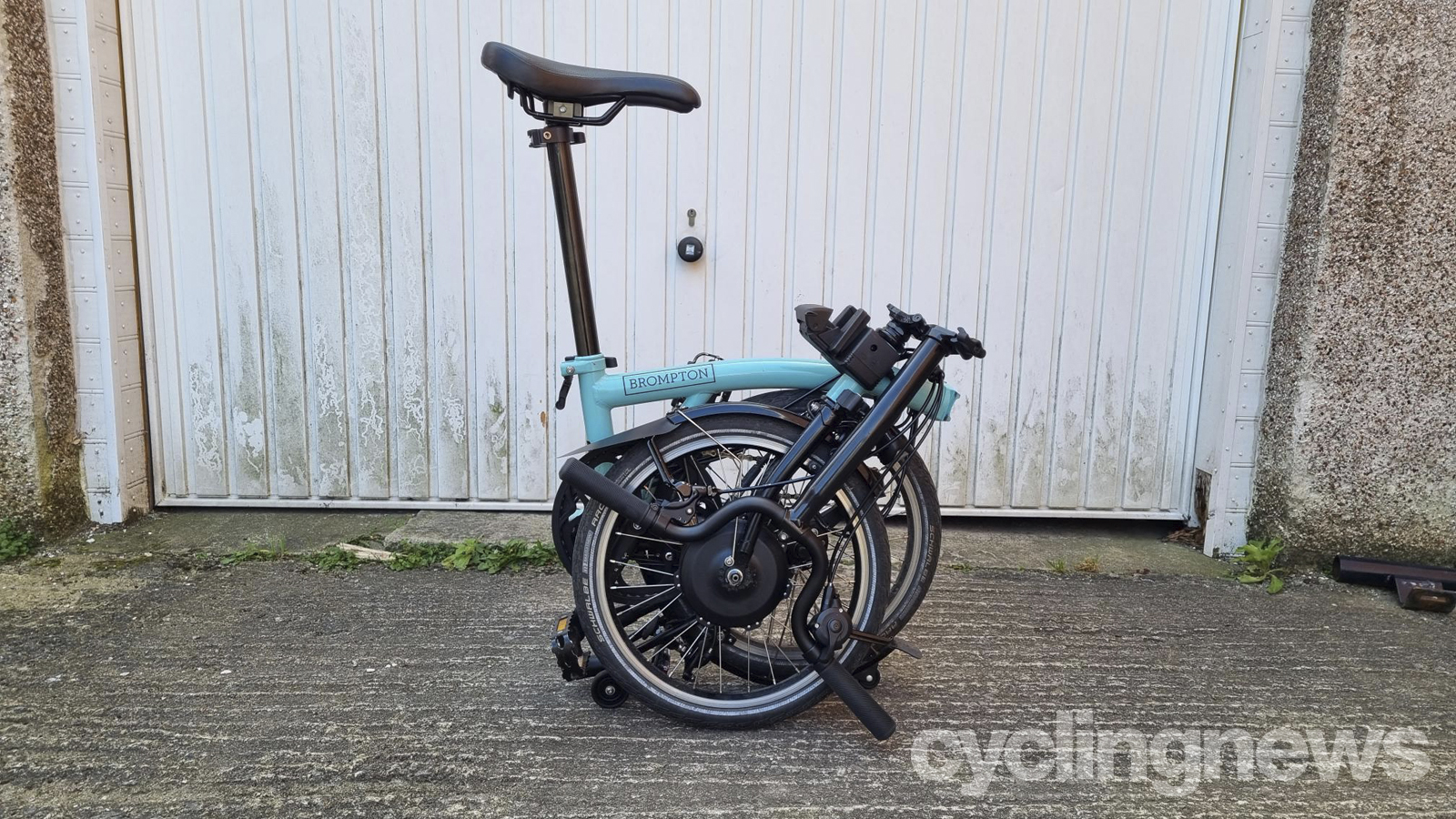
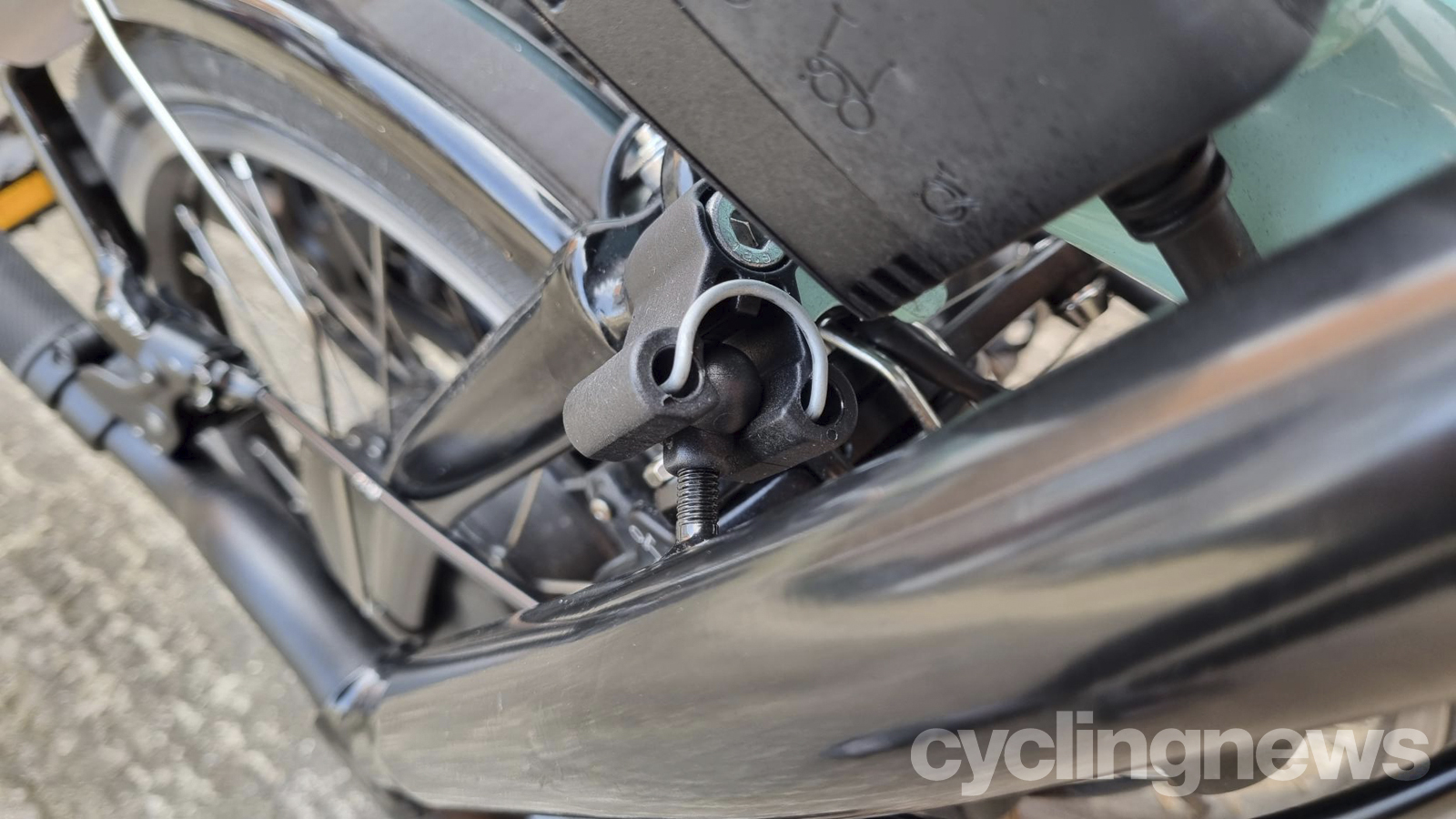
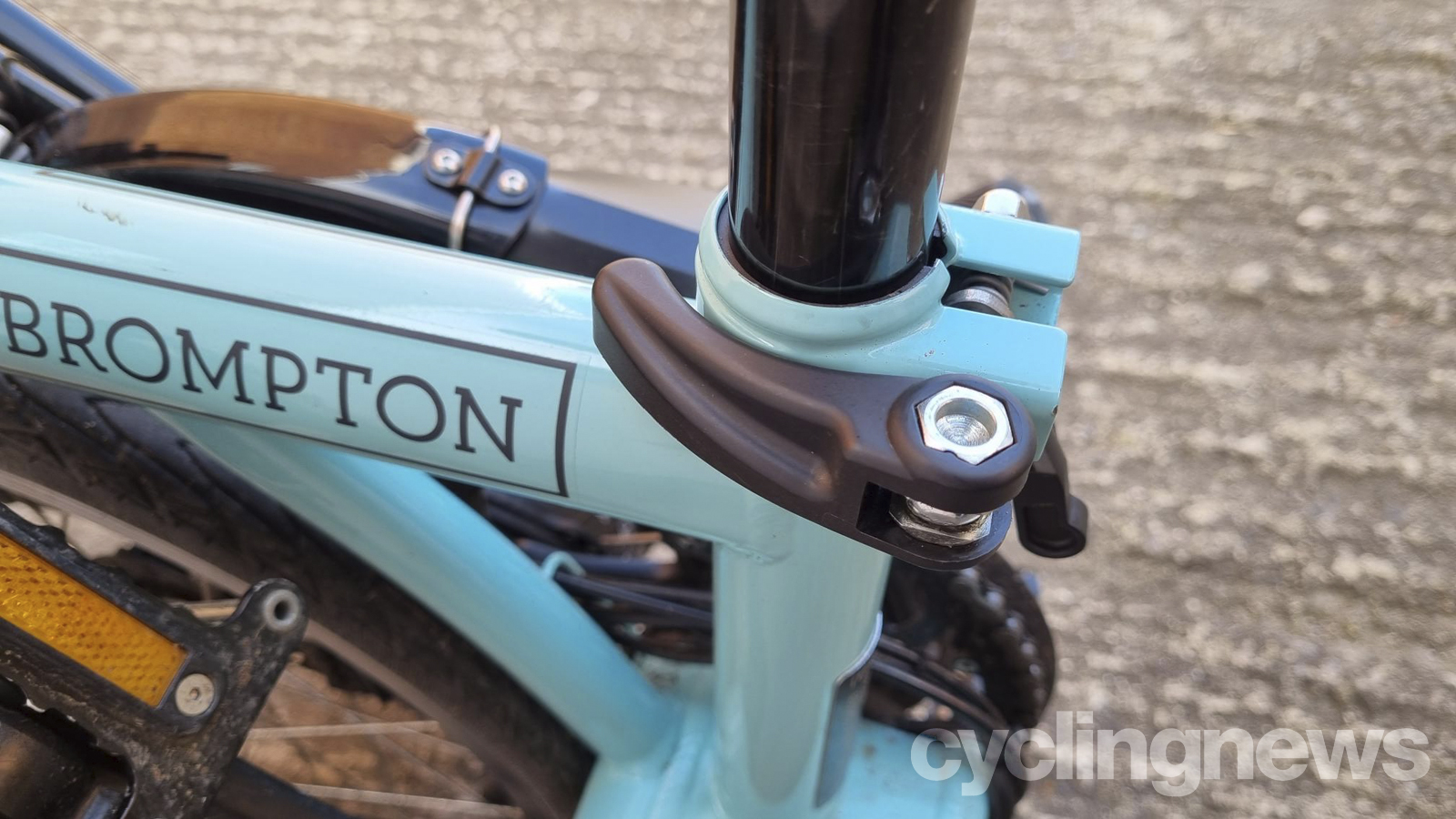
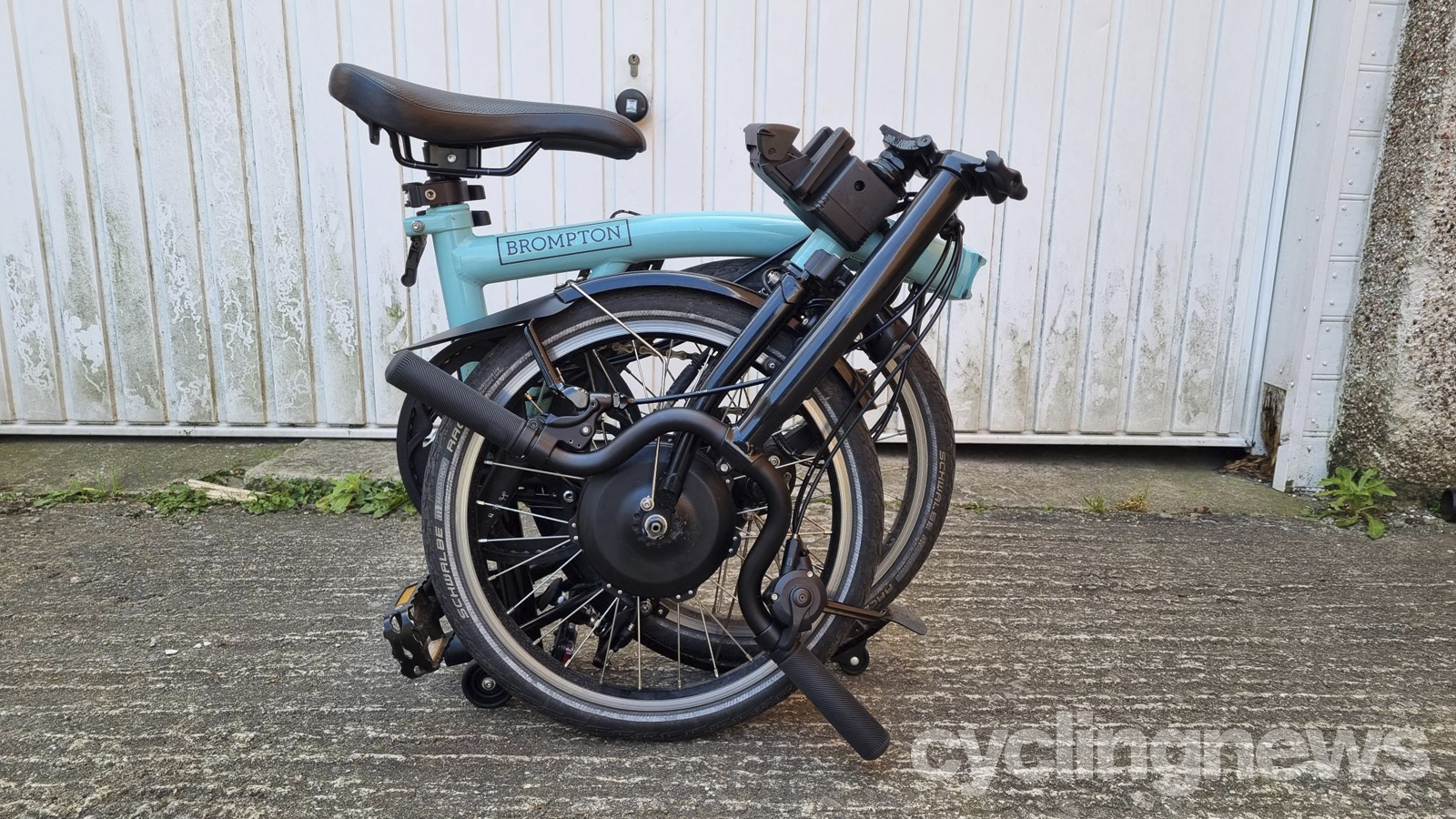
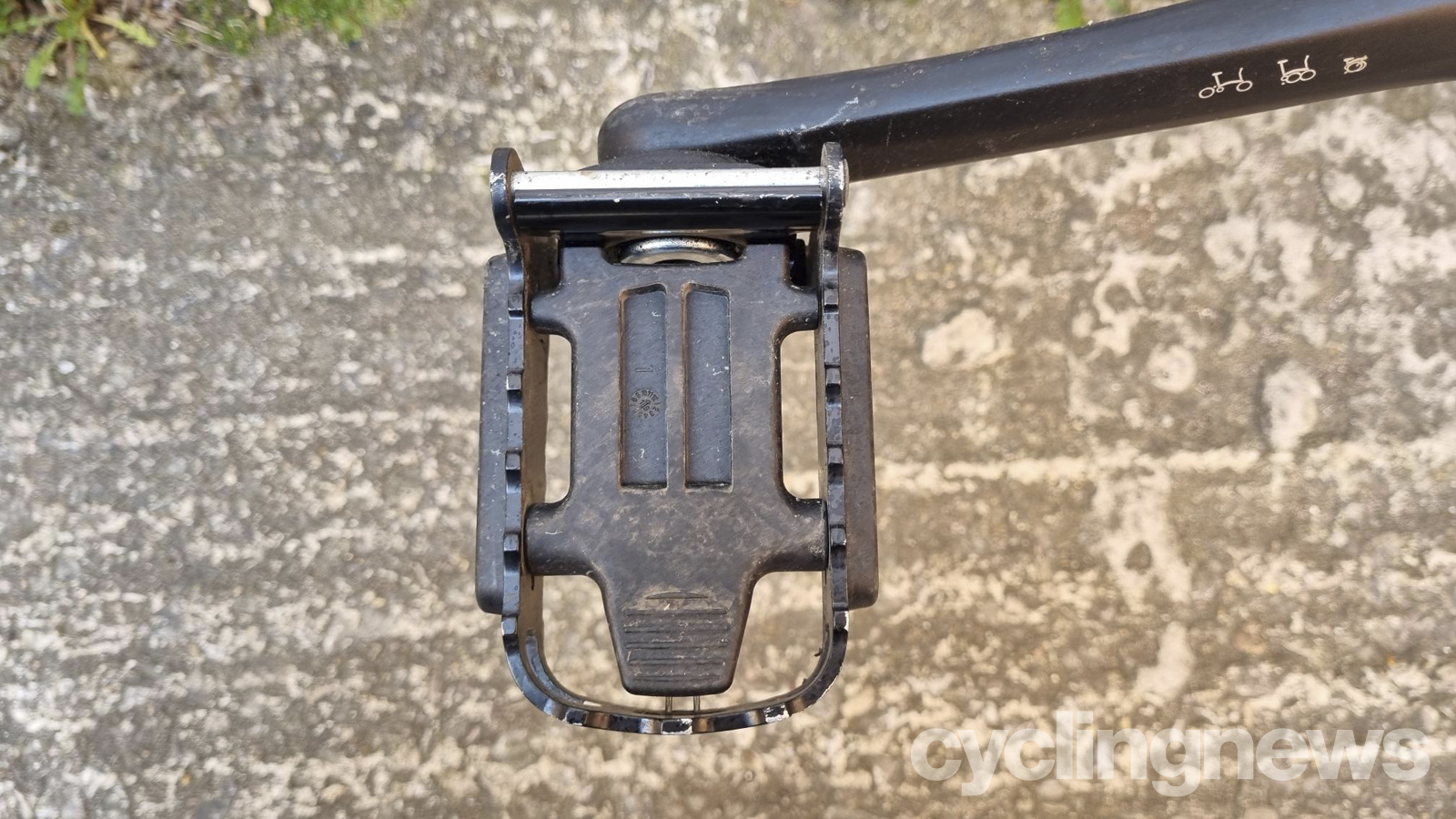
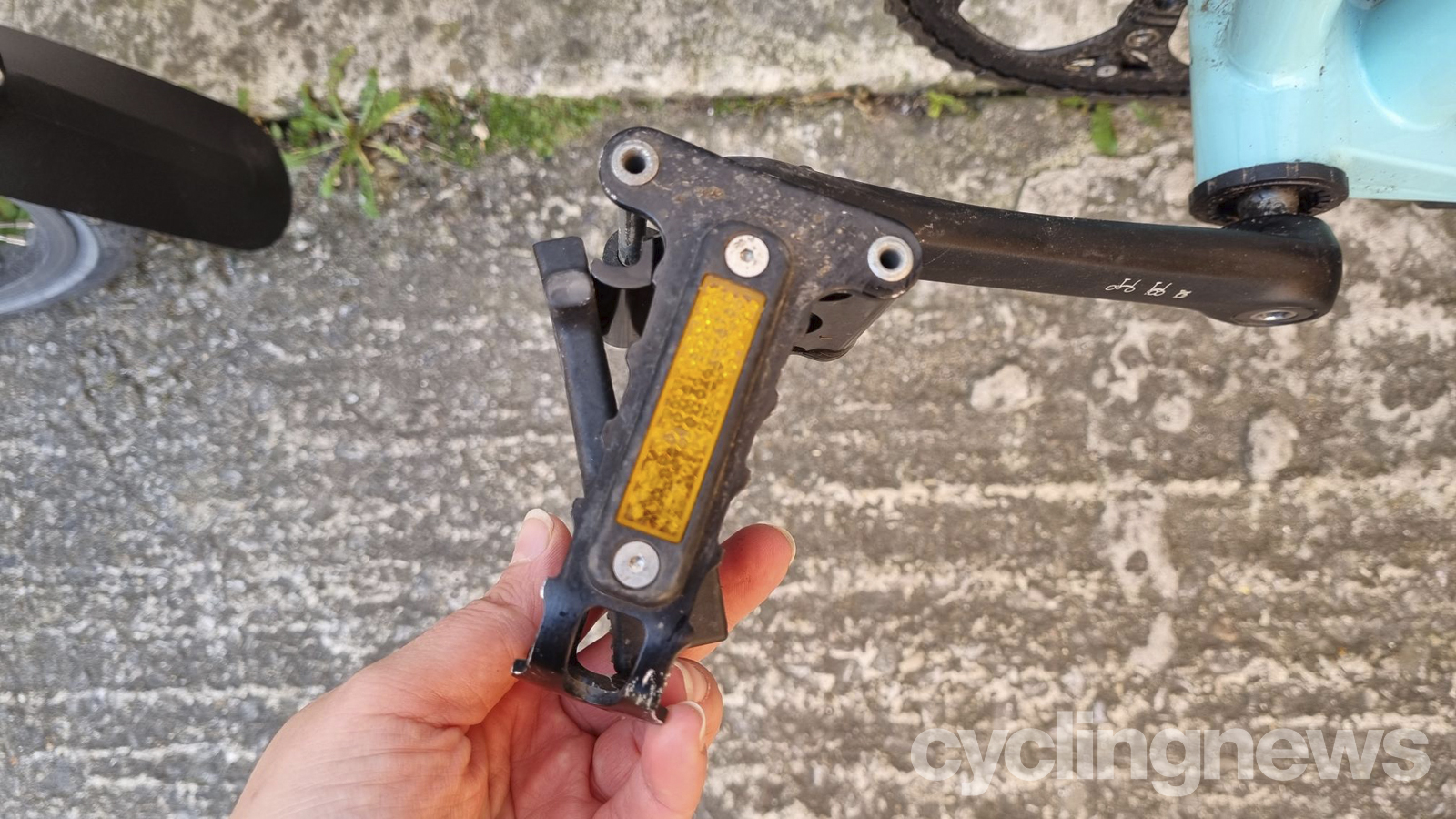
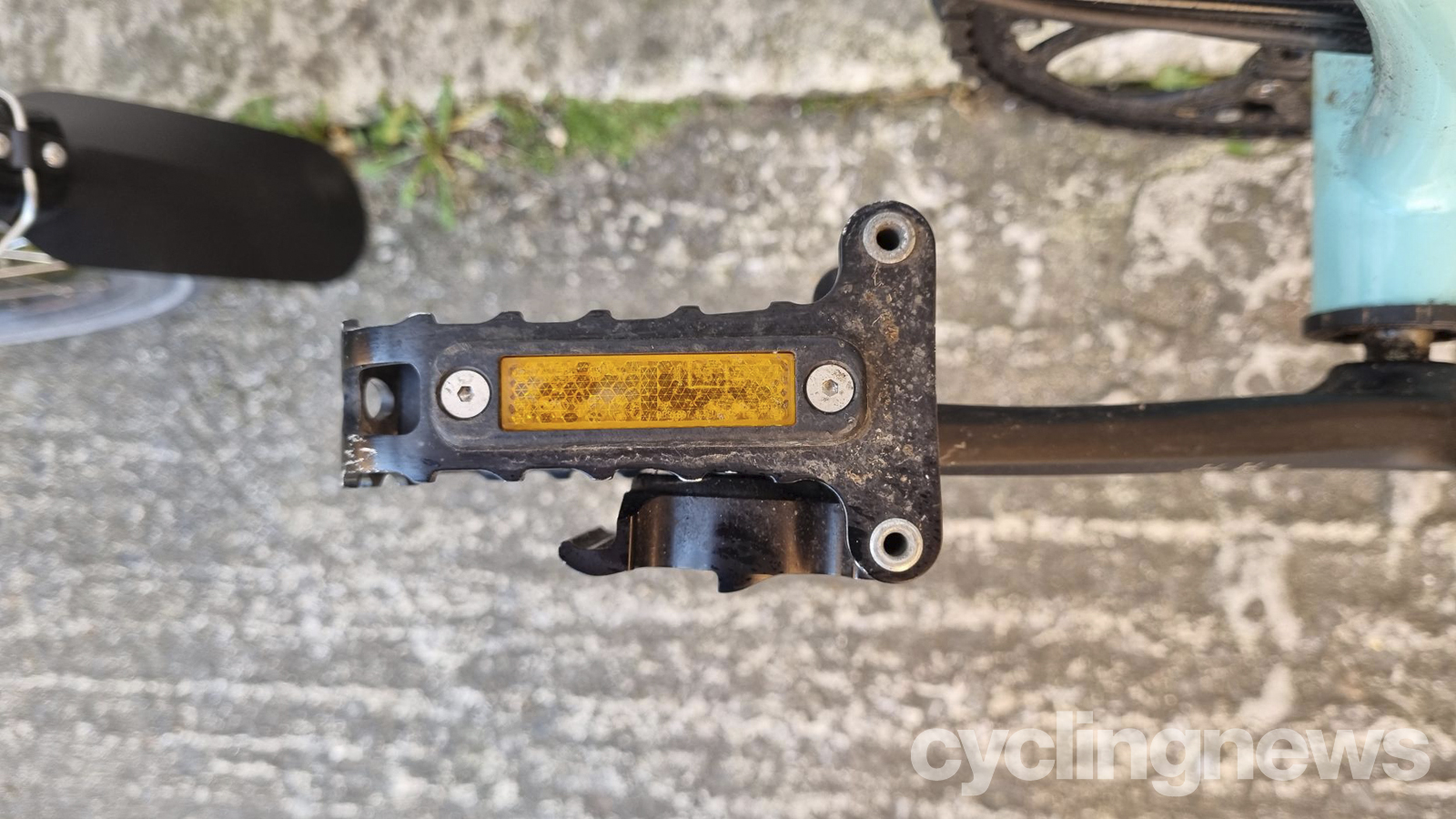
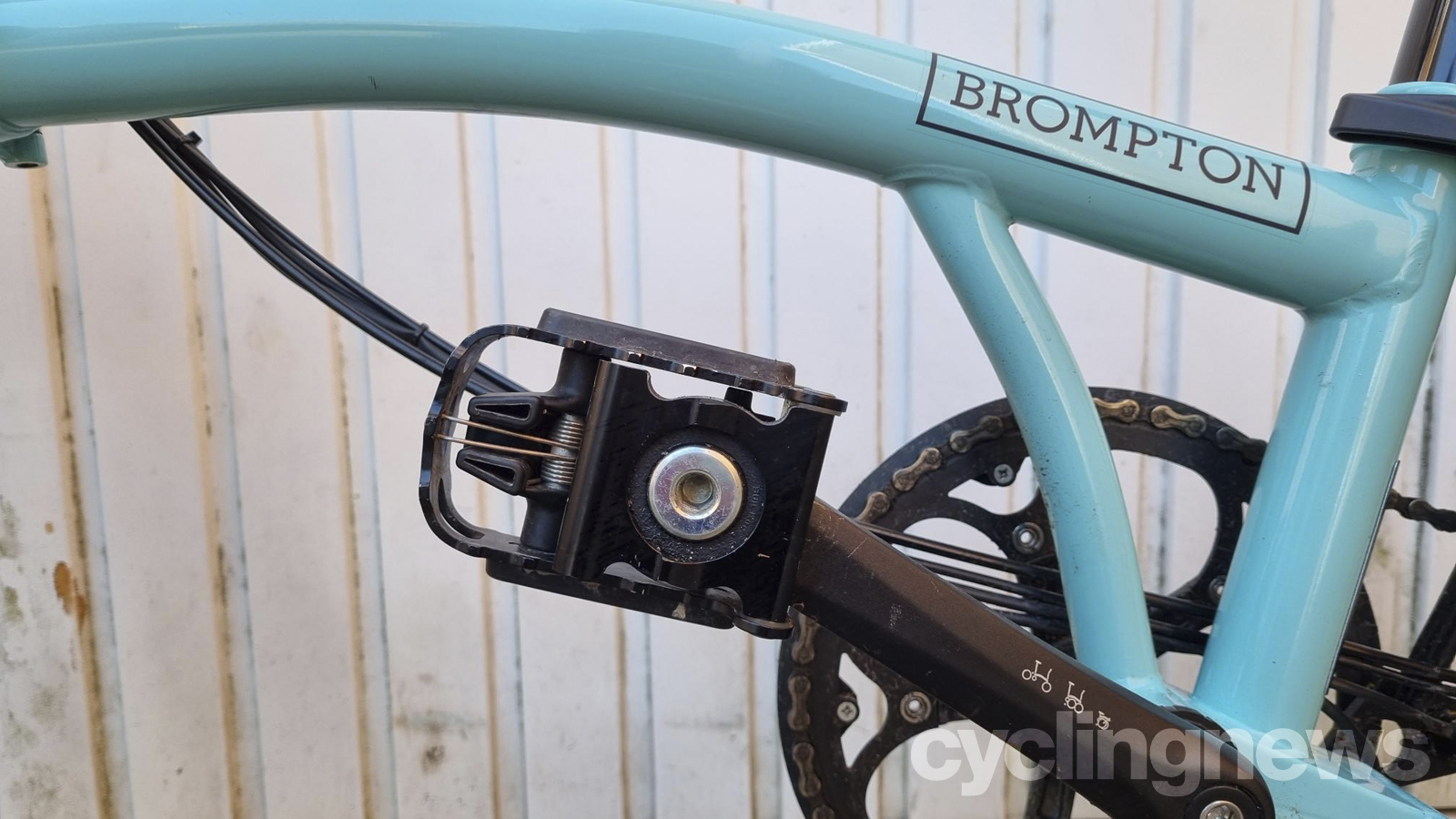
Specifications
The Brompton Electric C-Line Urban is built around a steel frame and fork. The 250W brushless DC motor is situated in the front hub, while the 300Wh battery slots onto the front by way of a bag (you must have one in place, and the battery cannot be used without one). It’s simply a case of inserting the battery into the bag’s central cavity and then slotting the bag onto the holder. The bike alone weighs 13.1kg, while the battery adds 2.23kg, bringing the total weight to 15.33kg.
This particular model in Brompton’s electric lineup is designed for urban use, like commuting and shopping, and therefore comes with quite a simple 1x2-speed spec. It has two gears, with 12t and 16t sprockets at the rear, and a two-speed chain pusher to shift between them, operated via a two-speed single trigger shifter. The forged aluminium crank comes with a 54T chainring and according to the official spec, is meant to feature an integrated chainguard, to prevent oil stains from reaching the rider’s clothing, however, this sample model didn’t come with one.
It rolls on 16in wheels wrapped in 35mm wide Schwalbe Marathon Racer tyres, which offer puncture resistance and feature a reflective sidewall for low-light visibility, while mudguards with rubberised flaps come pre-installed. Battery-powered lighting comes by way of Busch & Müller’s 40 Lux AVY LED front and rear lamps, and there are two different light settings available on the battery unit: manual and auto. Auto uses a sensor on top of the battery unit to detect light levels and adjust accordingly.
Atop the seatpost is the standard Brompton saddle, which features an integrated carry handle (essentially a hard plastic sheath beneath the nose of the saddle that covers the rails and gives you something to wrap your fingers around), as well as a mount for a Brompton rear light and saddlebag, neither of which was used for this review.
Tucked into the non-drive side rear triangle is a Brompton pump, which is compatible with both Presta and Schrader valves, and comes with a flexible hose — a necessary detail to work around the tiny wheels.
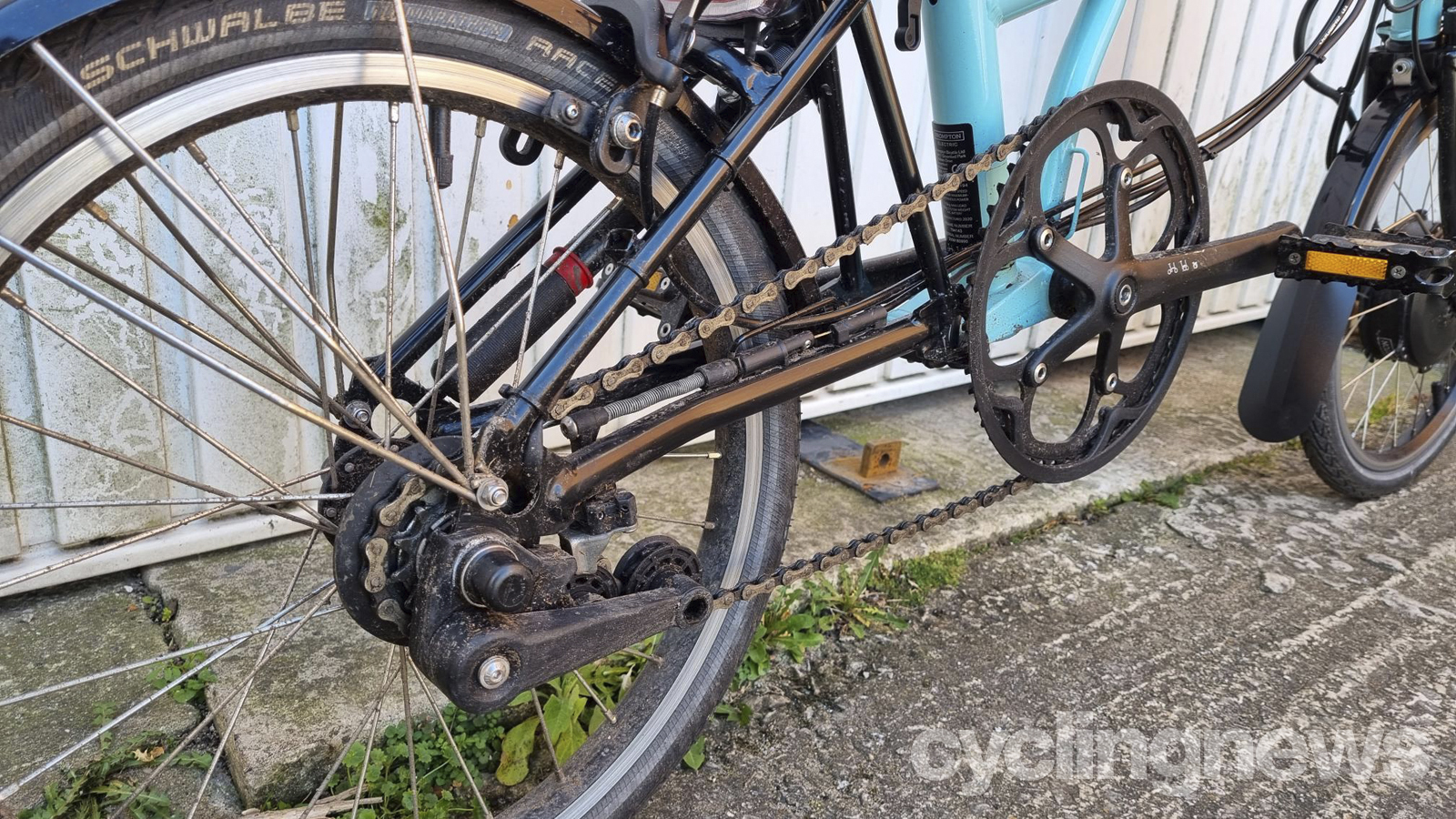
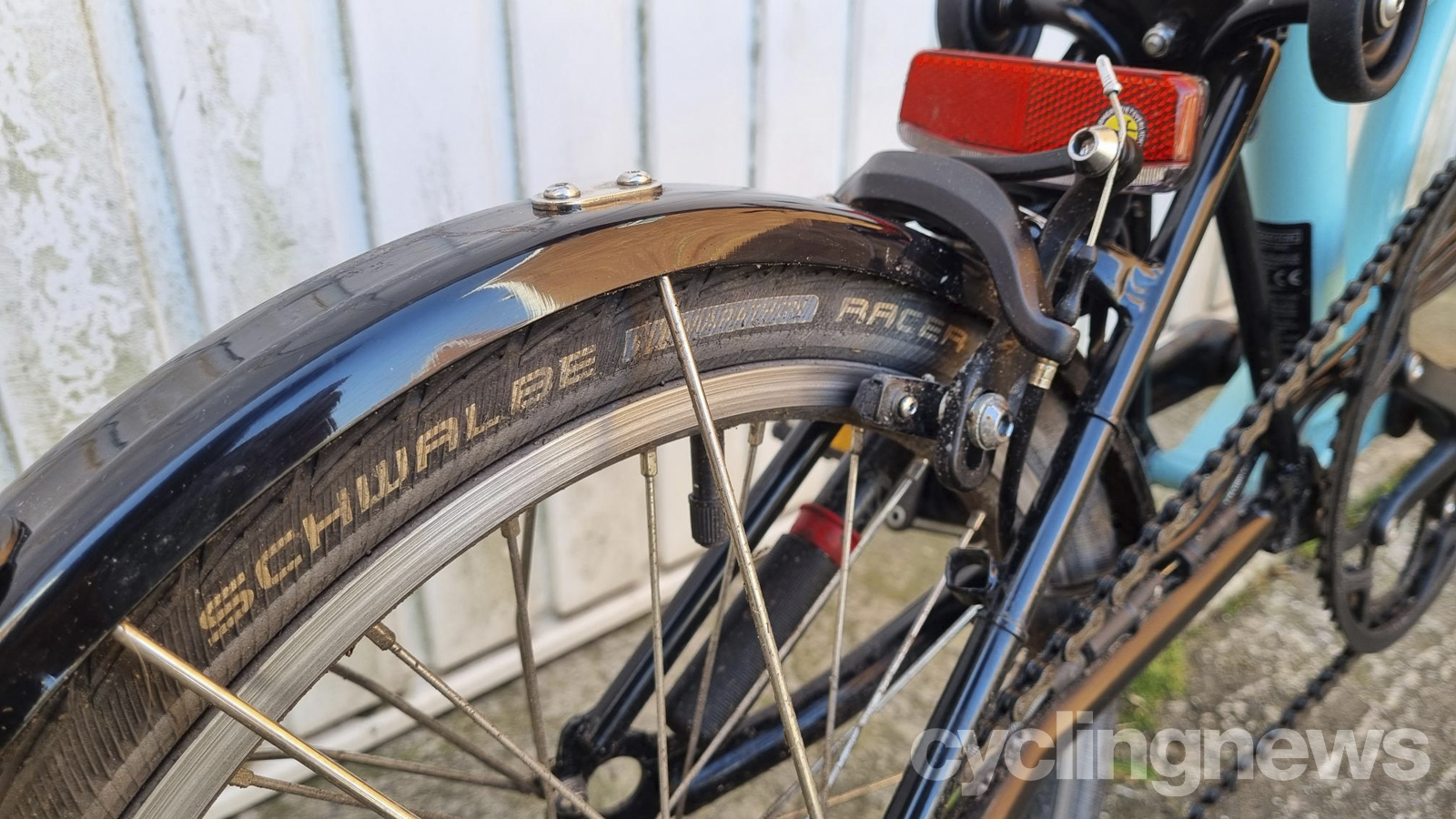
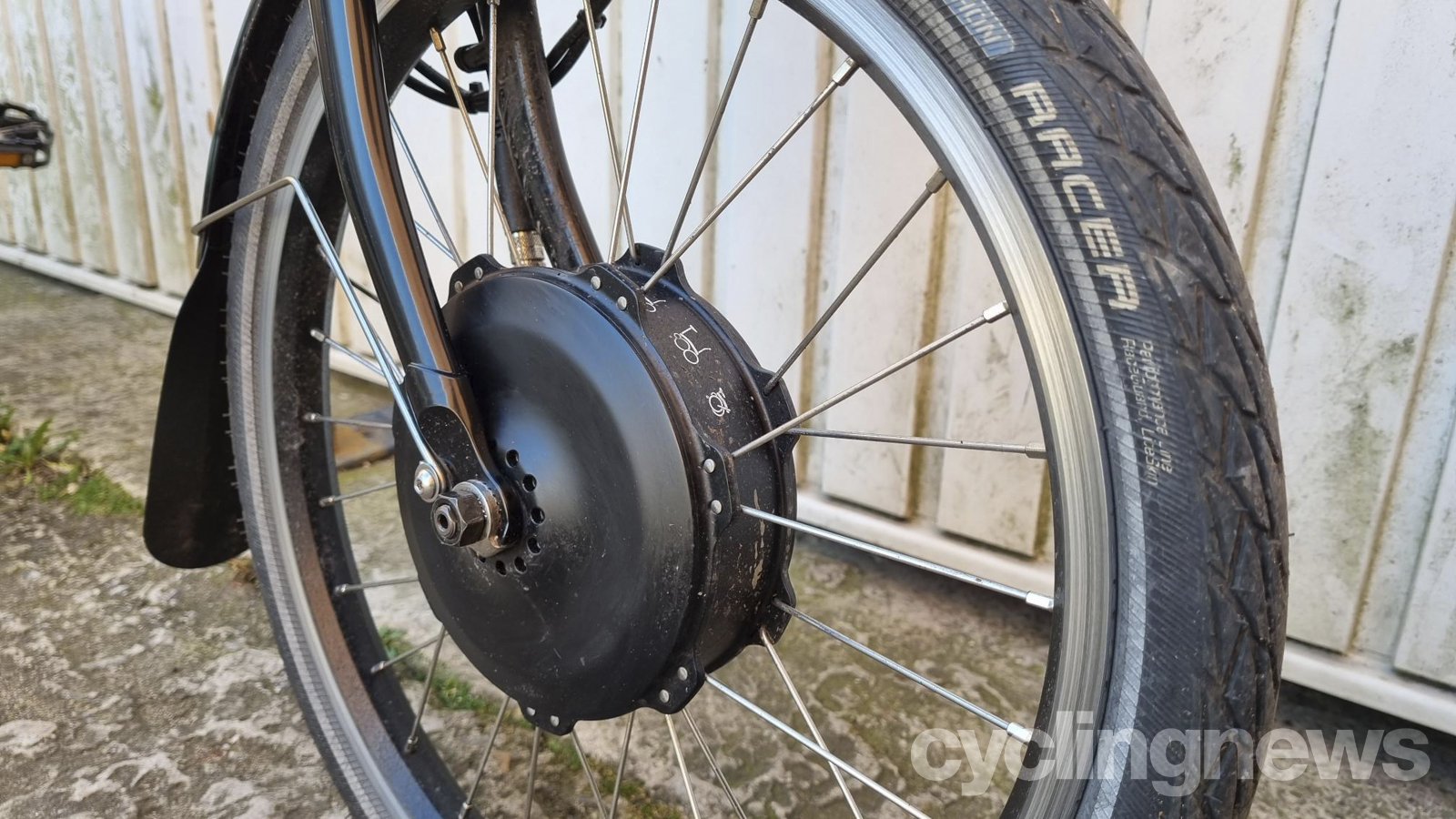
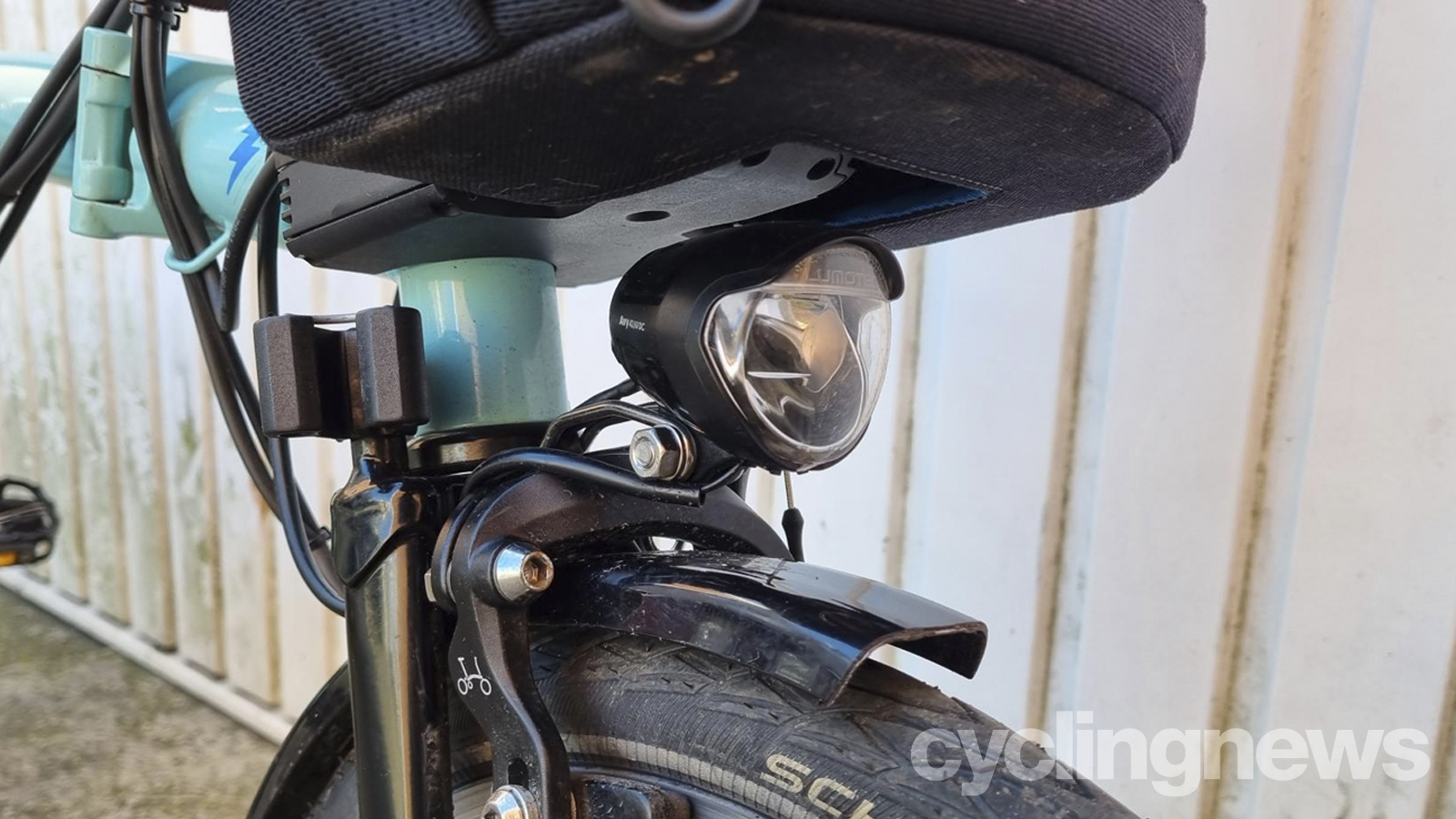
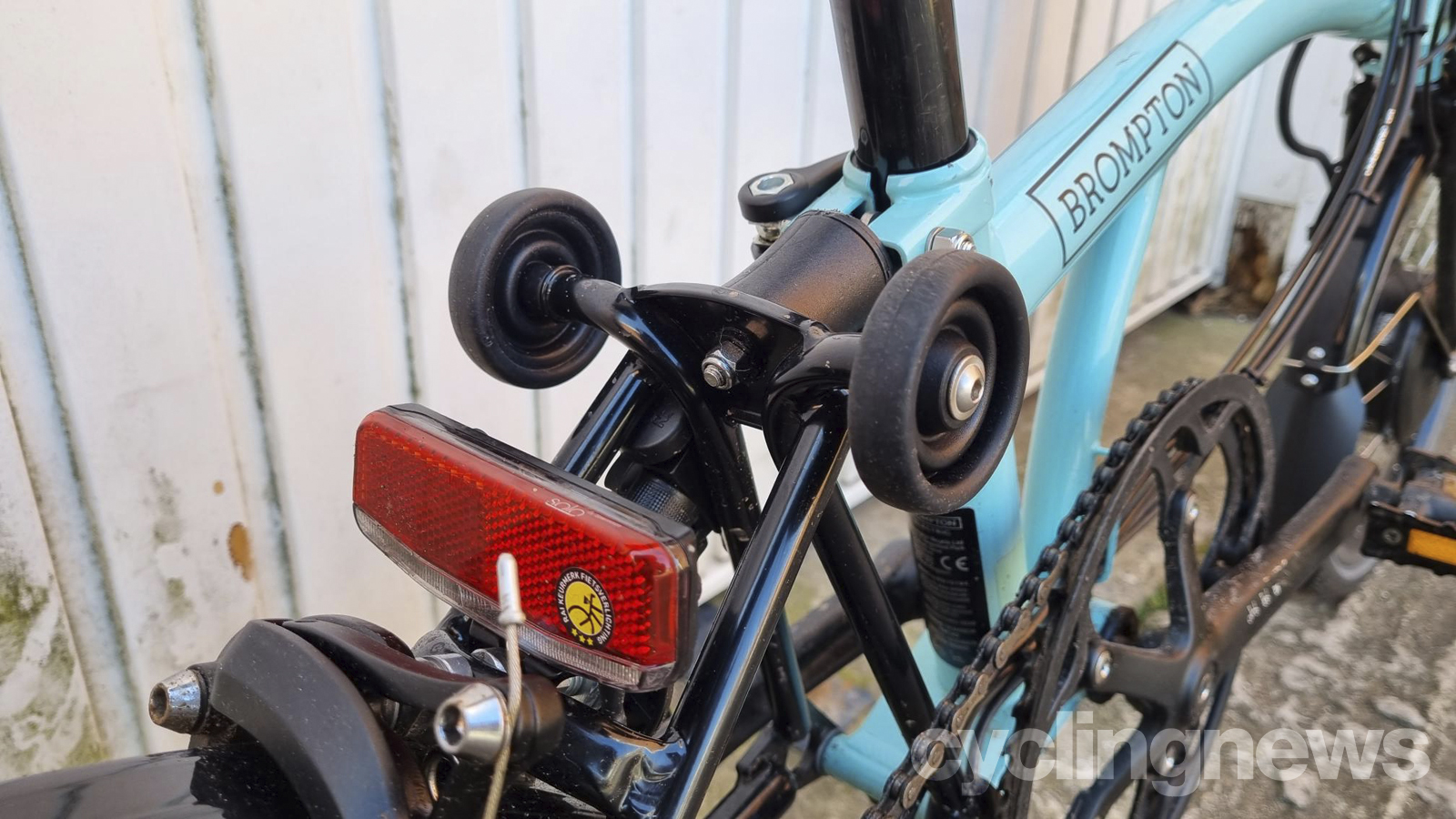
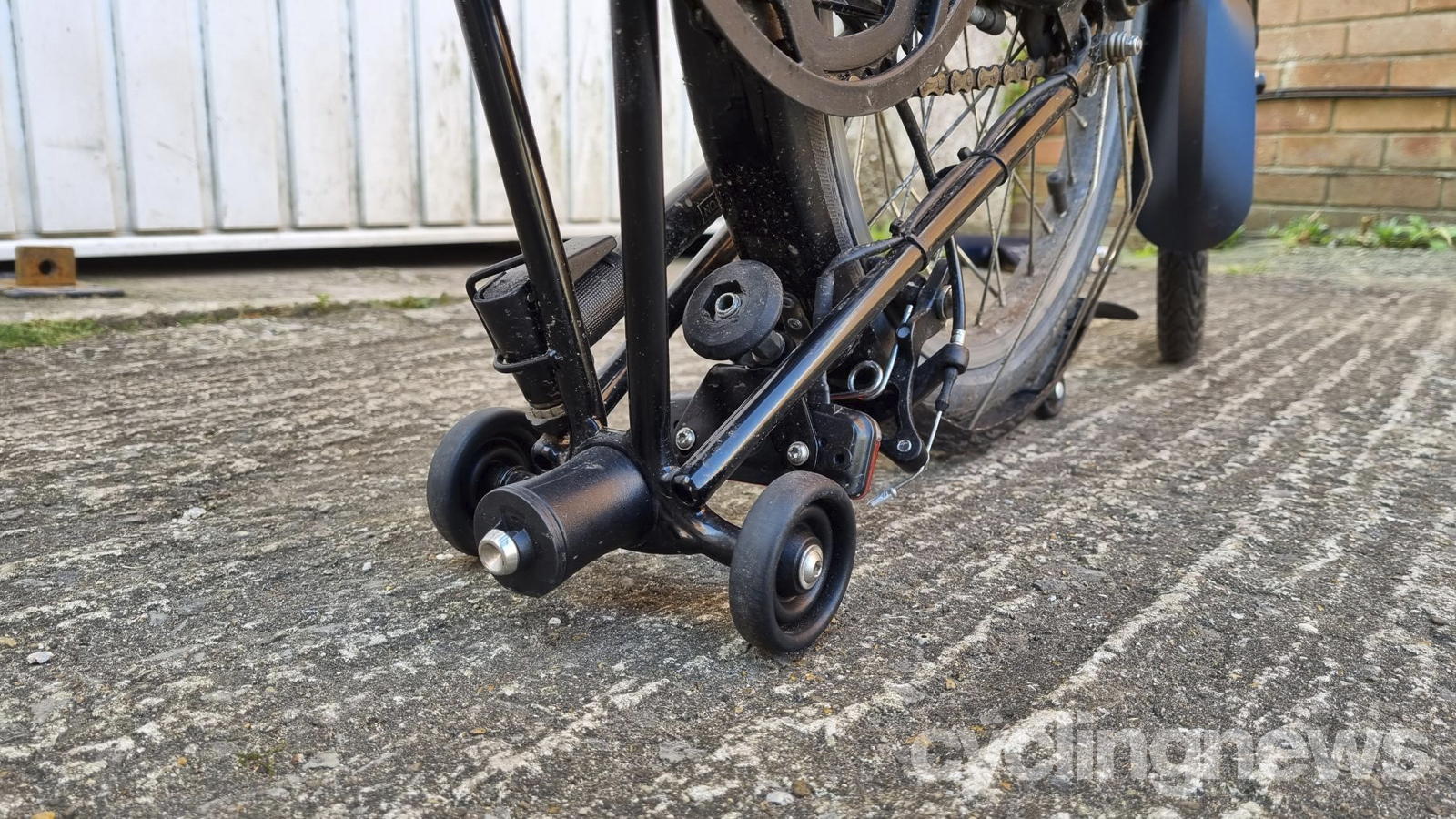
Finally, the bike comes with a 1.5L Essentials bag, which holds the battery and features a small pocket that can actually carry most of what you’re likely to need while running errands and travelling from point A to point B. For commuters and those wanting to carry a bit extra, there’s a 20L City bag available separately, which I also put to good use and found to be incredibly spacious. While commuting from Bristol to our Bath office, I was able to pack my laptop, lunch, a change of clothes, some toiletries, tools, a bottle of water and the battery charging cable. I also made use of this when travelling to visit family for a few days, and was able to pack everything I needed. Of course, it’s worth bearing in mind that while the bag has a decent capacity, the more you load onto the front of the Electric C-Line Urban, the heavier and more cumbersome it becomes. More on this shortly.
Performance
First things first, once I unfolded the Electric Brompton and got into position, I immediately noticed that the placement of the brake levers was very awkward and uncomfortable for my small hands. I imagine that taller riders, who will likely tower more over the cockpit, and have longer fingers, will find it easy to apply the brakes. I, however, with my short torso and small hands, have to put a lot of effort into reaching forward to get my fingers around the levers. As soon as I realised this, I whipped out my multi-tool and rotated their placement so they were elevated and easier to reach. However, when it came to refolding the bike, I discovered that the brake levers need to sit flush with the rest of the bike when the handlebar is tucked away, and my new brake positioning was getting in the way. So back they went. The levers themselves are adjustable for a shorter reach which is a blessing, but it’s more the angle that’s caused me some issues. I’ve had to get used to them, and while I can certainly plummet down the hill I live on safely, it does seem that once again I’m being punished for being a short cyclist. The Brompton would definitely benefit from having different options for stem length.
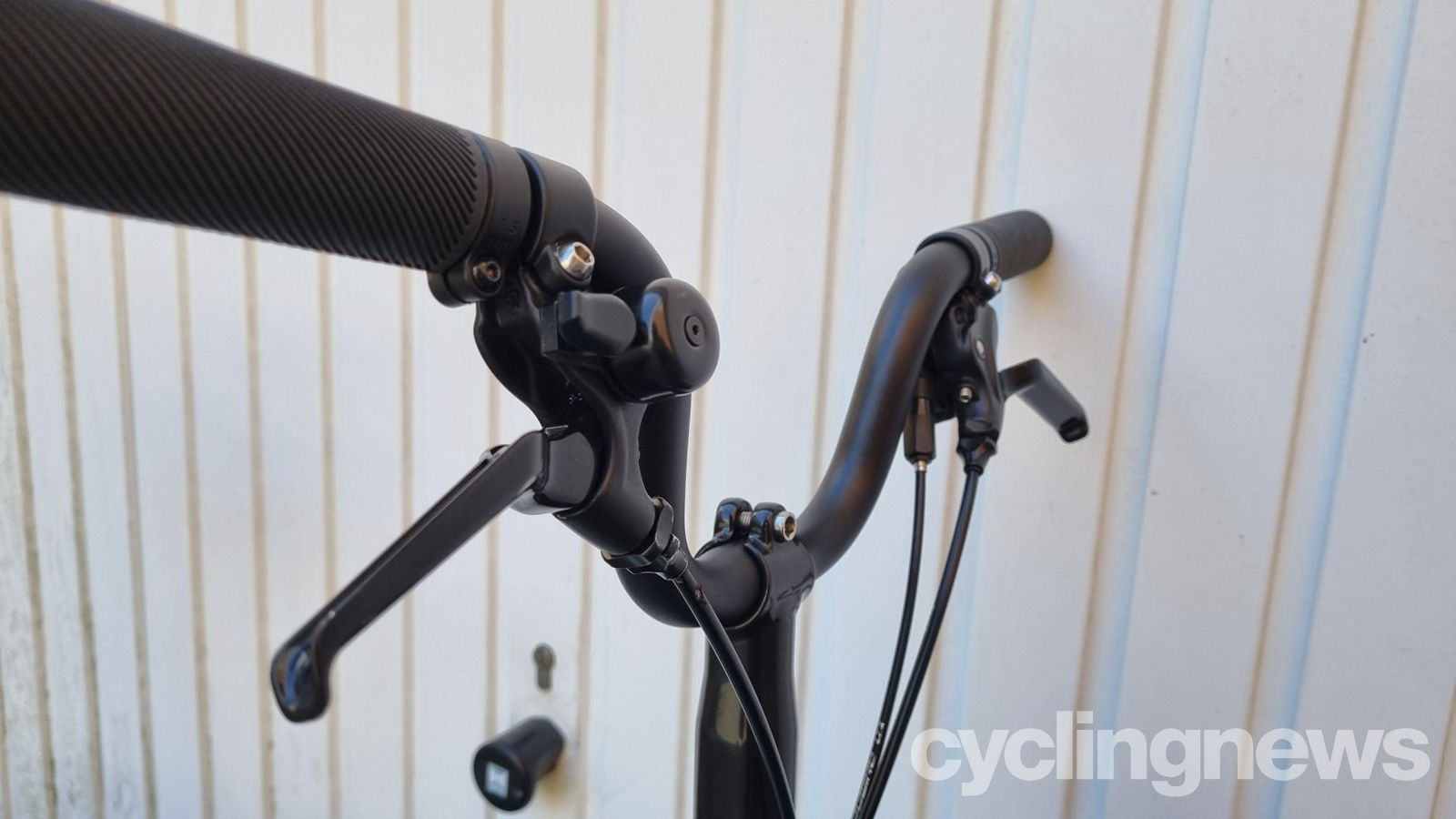
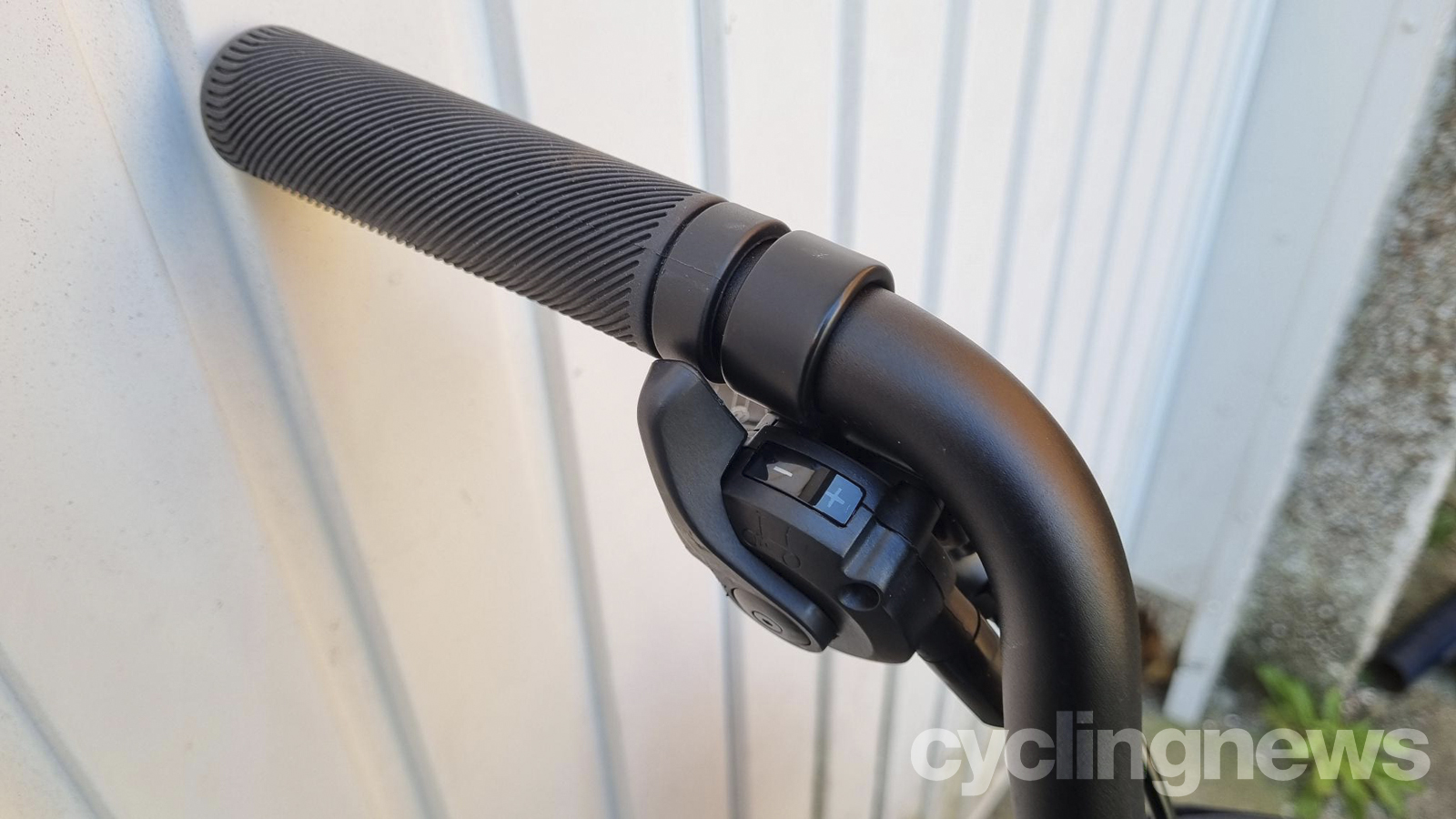
Setting off is twitchy business, with the motor being located in the front wheel. While there’s nothing inherently wrong with this setup, a rear-mounted motor is always my preference, as it feels more stable and offers more grip, because the power is located where the rider’s weight is mostly dispersed. Having the motor located at the front, on the other hand, places the power where the steering happens, and it just feels very different.
Once you get going, however, the ride feels great, especially on the flat with the highest power setting; you very quickly accelerate to 15.5mph (25km/h) and maintain that speed. The lowest power setting is useful if you’re needing to conserve battery power and sticking to flat routes - you feel the pedal assistance but you’re still putting your own power down. As soon as you hit any positive gradients, however, it’s definitely a good idea to increase the power mode.
One thing to be aware of is that the power mode button is located on the battery unit, which isn't the easiest to reach while on the move. As a confident cyclist, I can lean forward and change it, but for anyone who doesn't feel comfortable doing this, they will have to stop every time they want to change power mode, which can be a massive pain. The setup would definitely benefit from some kind of remote on the handlebars.
In terms of battery life, the claimed range is 40-80km on a single charge, depending on which mode you use. When using the lowest assistance mode, I have definitely been able to achieve around 80km between charges and used the Brompton several days in a row for short journeys and errands without needing to charge. When in the most powerful mode, and climbing hills, however, I have seen it drain fairly quickly. It could be argued that the extra strain on the battery to climb these hills isn't something that it's designed for, so I'm not holding it against it at all, but it's worth considering. Commuting to Bath (16km each way), I found that the battery went from 5/5 to 3/5, and needed to switch to the lowest setting on the way home in order to make it without it fully draining.
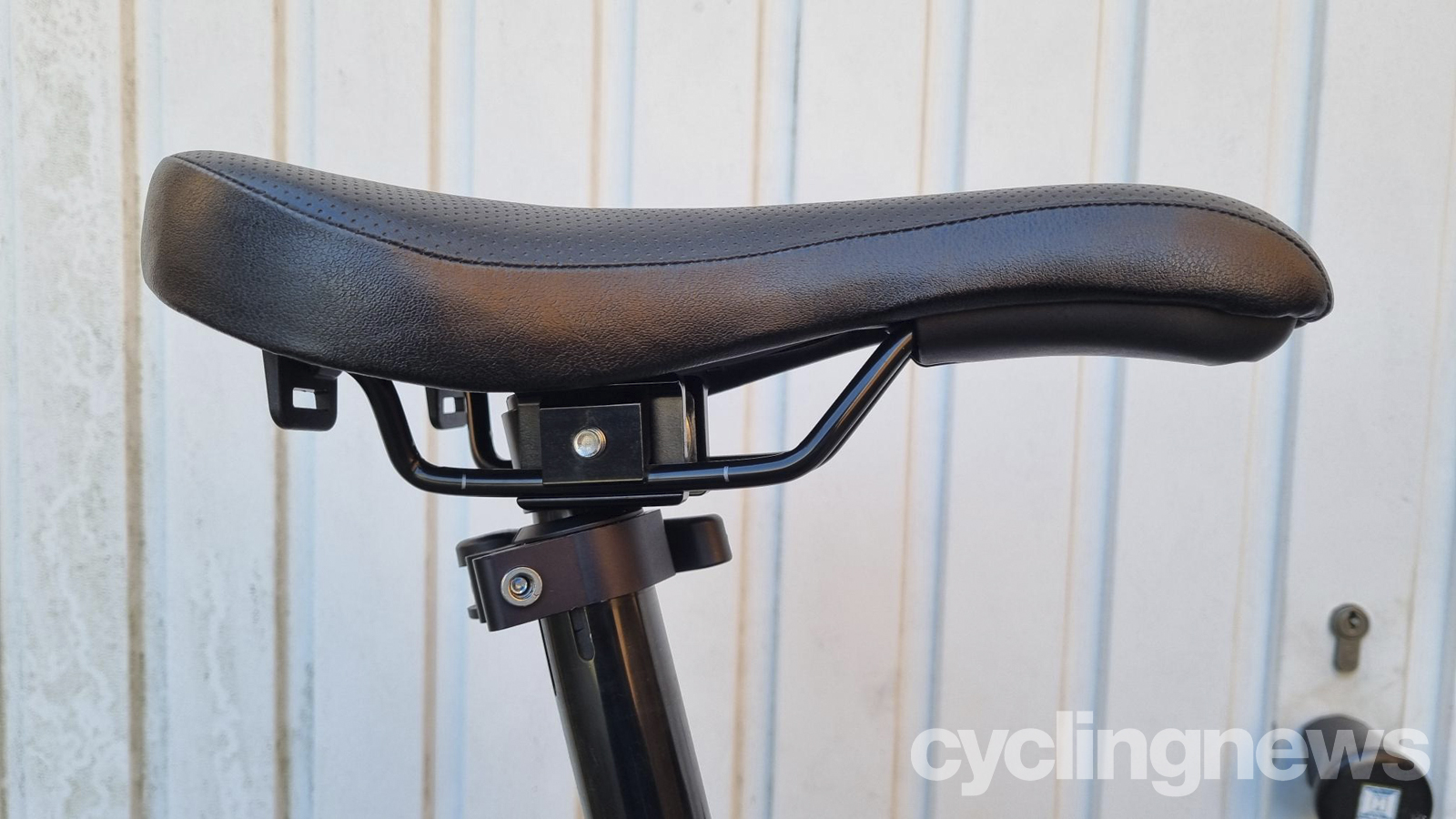
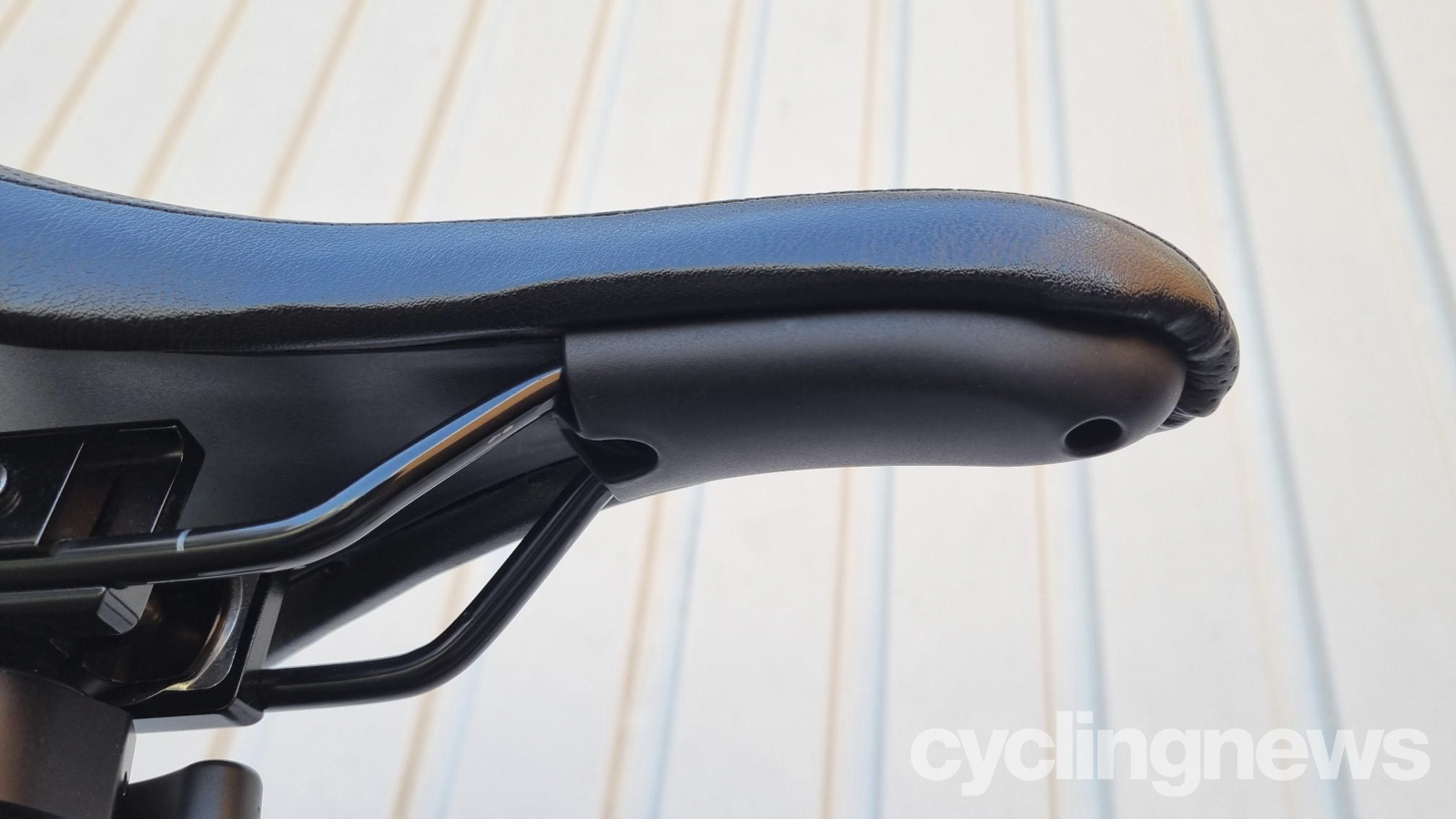
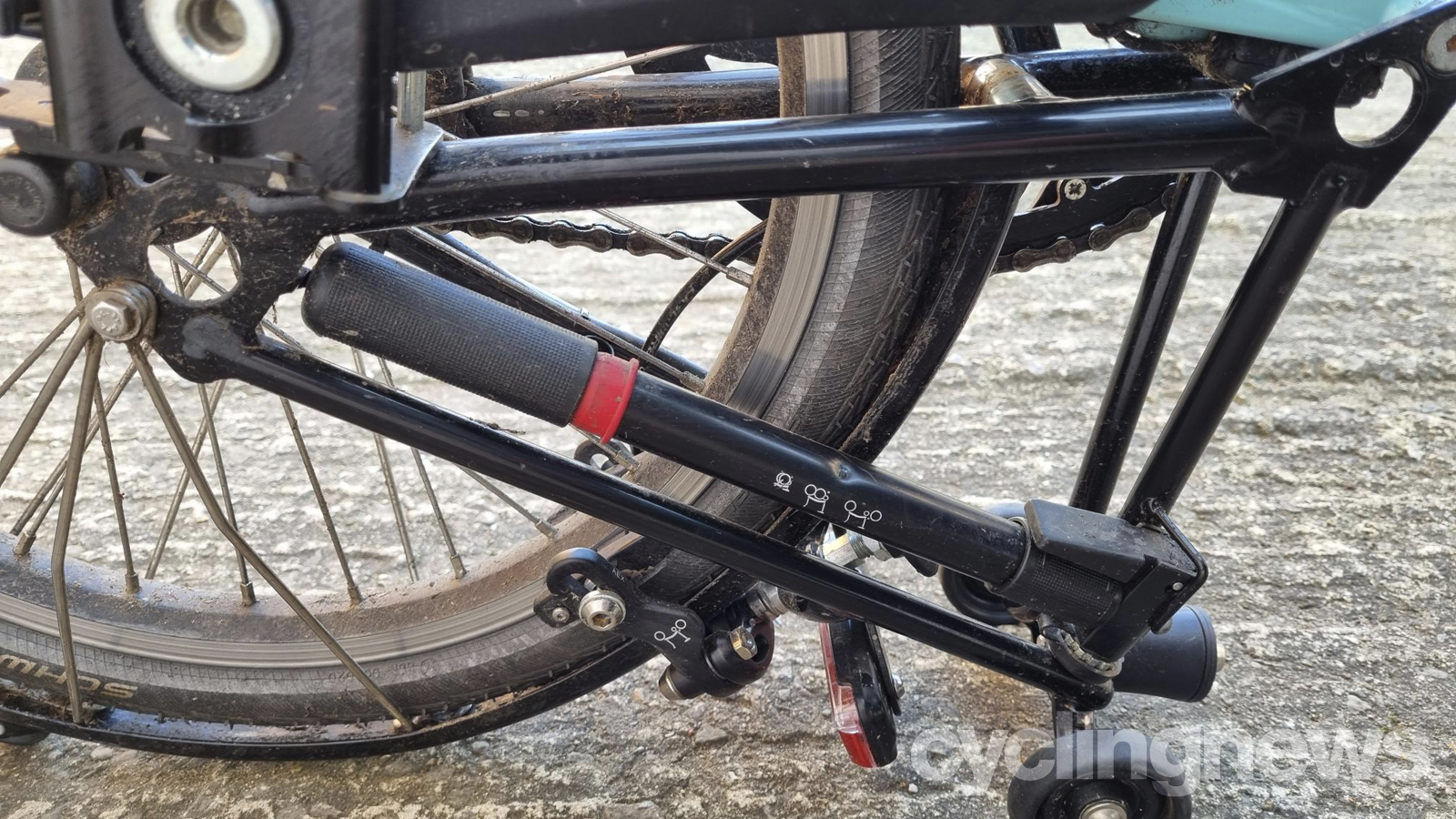
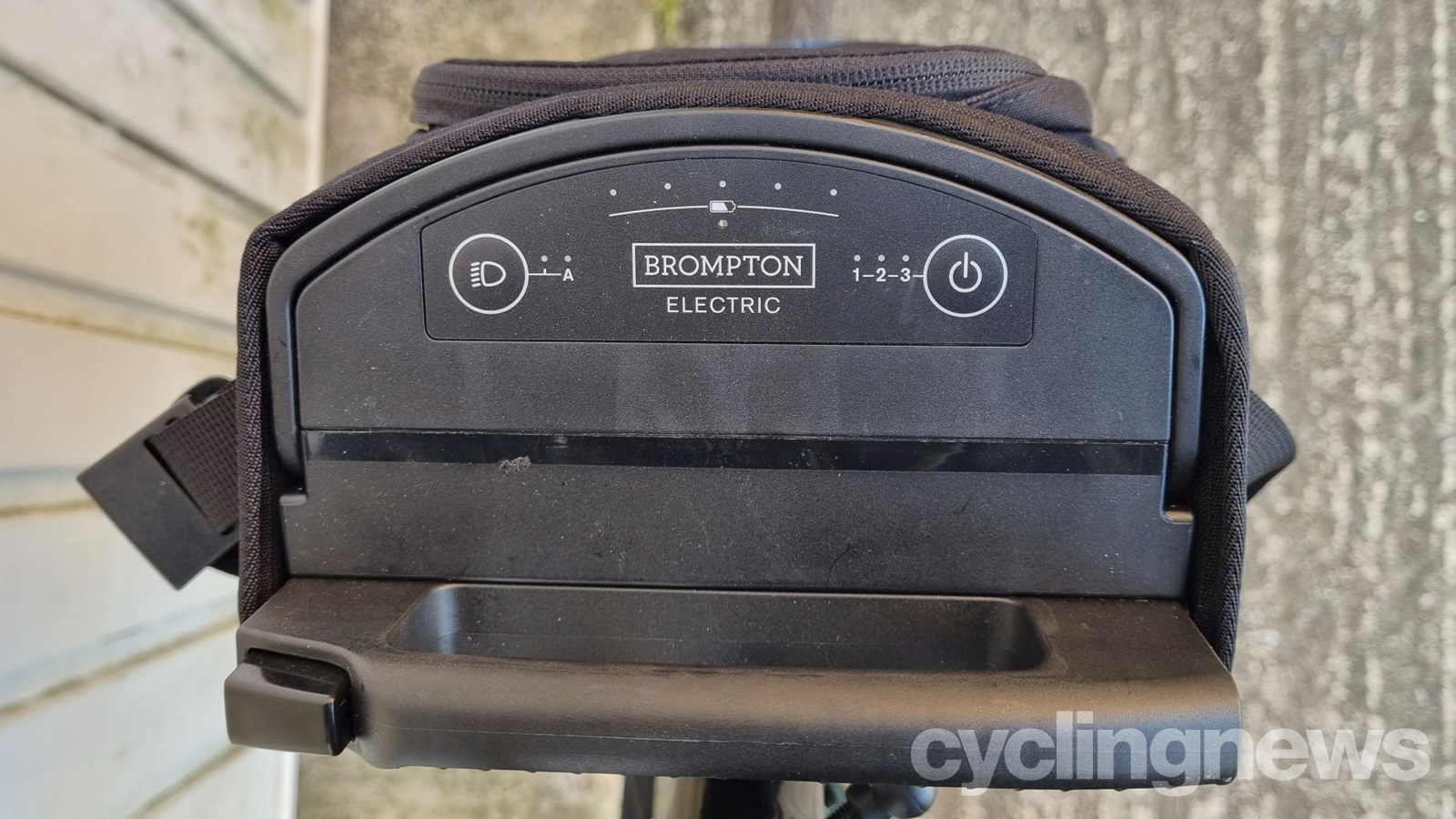
The hill I live on is big, with an average gradient of six per cent, with the maximum gradient hitting 10 per cent in places. I’ve very much enjoyed using the Brompton Electric C-Line Urban to get myself up it, but let me tell you, it doesn’t make it ‘easy’. Once the gradient kicks in, even on the highest power mode, the ride feels sluggish, and I’m still putting in a lot of climbing effort. It’s a combination of the smaller wheels and a medium-powered motor, and while it definitely does the job, don’t expect to not still break a sweat if you’re planning to climb hills, though it certainly makes things easier.
Something that does concern me, and which has caused a few near-misses, is the fact that braking doesn’t cut out the motor like it does with many e-bikes. For the most part, this isn’t a huge problem, but I did encounter some haphazard stopping and starting when trying to stop. Many cyclists will put their weight onto one pedal while braking in order to step down and come to a complete stop. If you come to edge of a junction or kerb where you’re about to cross busy traffic, even if your foot isn’t in quite the right position when you reach the end, you’ve usually got a little leeway to put in a half- or quarter-turn of the pedal to do what you need to do. Unfortunately, as I found on several occasions, when this happens on the Brompton Electric, because braking doesn’t cut off the motor, when you try to make that final quarter-turn, you immediately start to accelerate again. This has almost sent me out into the path of a passing vehicle more than once and is something that seriously needs to be addressed.
Otherwise, all other aspects of the ride are great. The rim brakes do a great job of stopping and keeping your speed under control while descending, the shifting between high and low gears is instant, and the lights do a good job of illuminating dark roads and cycleways. I experimented with using both manual and automatic lighting modes and found the auto setting to do a really good job of detecting light levels and auto-adjusting. However, it’s worth being aware that the light sensor is located on the top of the battery, so it’s important that the bag strap doesn’t obstruct it. When using the Essentials bag I had no issue with this, as I kept the strap very short and easily tucked away. The City bag, on the other hand, due to its size and bulk, is much easier to carry with a longer strap, but when slotting it onto the front of the bike, it does get in the way. There’s a pocket down the side that you can use to tuck the majority of it away, but there’s also a magnetic clip on the top of the bag that secures one side of the strap in place, which means it will automatically cover the battery unit.
It’s mostly off the bike that my gripes come into play. Having travelled by train with it a few times, and having spent many more evenings using it for social gatherings where multiple venues are visited, the constant folding and unfolding became extremely tiresome for me. While the saddle comes with the “integrated carry handle”, it doesn’t do much to make hoisting this really heavy chunk of metal up and down stairs, or in and out from under tables, any easier.
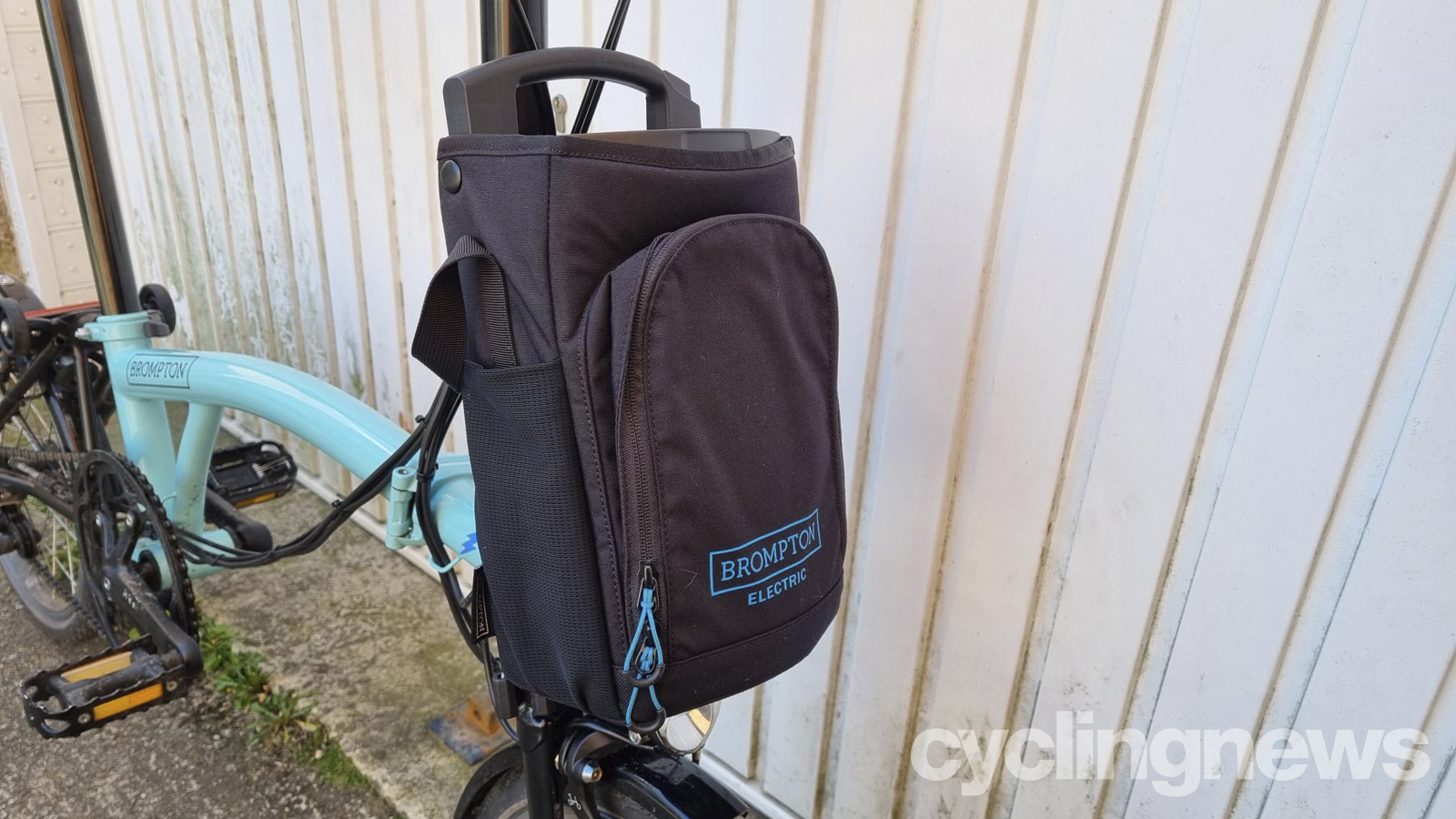
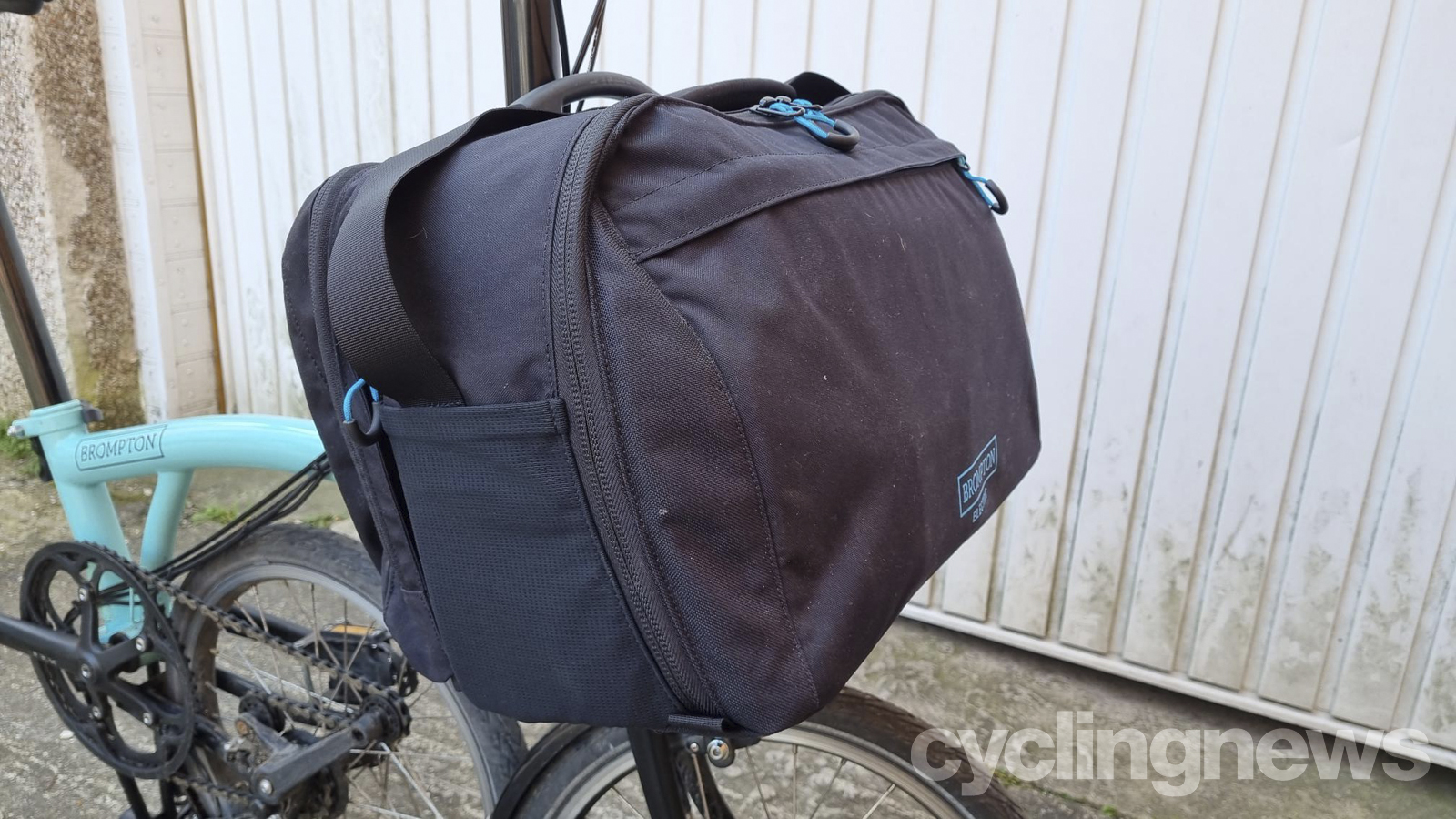
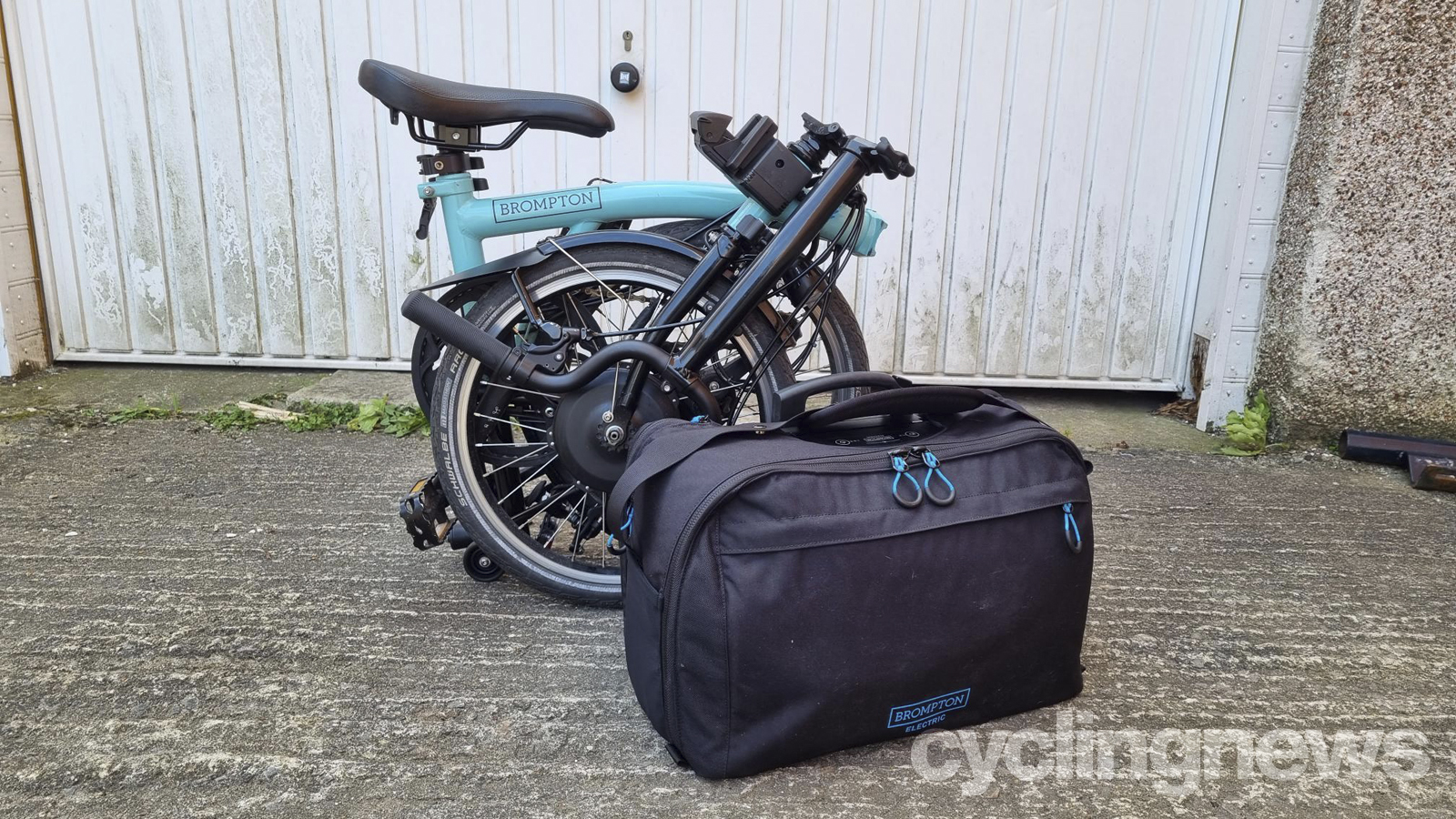
Of course, the solution to that is to keep the bike partially folded so that you can wheel it along, right? Well, it should be, however this wasn’t as easy as I was expecting it to be. I have experience of using an analogue Brompton (belonging to my partner), which has a rear rack and, as a result, four small wheels to roll along, instead of three. This extra wheel makes all the difference, as it creates a stable base. With only a single wheel on the mudguard of the Electric C-Line Urban model, it’s less stable and therefore more awkward to roll along. It is however compatible with the Brompton rack, so if you’re happy to have this added on after purchase, this would be a good solution.
Adding to this awkwardness is the fact that the handlebar catch (which holds the stem to the fork while folded), seems to have weakened over time, and often loses its grip. This results in the handlebars coming loose and, on many occasions, has caused them to get caught on things while in transit. In fact, the most vivid example of this (and probably the most comical for passers-by) was when I carried the completely folded Brompton to the top of an escalator, stepped on, and then discovered that the handlebars had come free and were caught on the side of the escalator entrance. I was slowly descending towards the train platform, holding the majority of the bike, while the handlebars were clinging for dear life in the opposite direction. My only regret is that this was never caught on camera because once I’d gotten over my utter annoyance, I can appreciate that this was probably a hilarious thing to witness.
The specific model I’m testing is about one and a half years old and had two testers previously, so it’s been put through a lot of use. However it’s worth noting that the handlebar catch could now do with being replaced, and it calls the longevity of some of the bike’s individual components into question.
Verdict
My experience with the Brompton Electric C-Line Urban has definitely been a mixed bag. For the most part I’ve enjoyed using it, found it extremely convenient to get around Bristol efficiently, ride home after a long day with a bit of help getting up the hill, and being able to travel by train without going through the endless palaver of booking bike spaces (thanks for nothing, First Great Western). It’s great not having to carry D-locks, and being able to quickly fold the bike away and plonk it in the corner under a table and out of the way.
However, after a heck of a lot of use, I started to reach the point of feeling like it was more hassle than it’s worth, especially if you’re catching trains or going from place to place and having to continuously fold-unfold-fold-climb-stairs-unfold until you’re ready to collapse into bed. Throw in a worn-out catch and some rebellious handlebars, and you’ve got the making for a type-two comedic experience.
Seriously though, I would say that if you’re a city-dwelling commuter who either mixes up their modes of transport or has little space for bike storage, then a Brompton comes highly recommended. An electric Brompton, though, I would recommend with caution. If you need, or want, the extra boost and don’t mind a lot of faff, then this is certainly a great and convenient bike to choose. If you’re on the fence about needing electric assistance though, I would definitely recommend the analogue version for better portability.
Tech Specs: Brompton Electric C-Line Urban folding bike
- Price: £2,875 / $3,550 / €3,320 / AU$N/A
- Folded dimensions: 585 x 565 x 270mm / 23 x 22.2 x 10.6in
- Weight: 13.1kg (15.33kg with battery)
Mildred joined as Reviews Writer for Cyclingnews and BikePerfect in December 2020. She loves all forms of cycling from long-distance audax to daily errand-running by bike, and does almost everything on two wheels, including moving house, and started out her cycling career working in a bike shop. For the past five years she's volunteered at The Bristol Bike Project as a mechanic and session coordinator, and now sits on its board of directors.
Since then she's gone on to write for a multitude of cycling publications, including Bikeradar, Cycling Plus, Singletrack, Red Bull, Cycling UK and Total Women's Cycling. She's dedicated to providing more coverage of women's specific cycling tech, elevating under-represented voices in the sport, and making cycling more accessible overall.
Height: 156cm (5'2")
Weight: 75kg
Rides: Stayer Groadinger UG, Triban RC520 Women's Disc, Genesis Flyer, Marin Larkspur, Cotic BFe 26, Clandestine custom bike
